Revolutionary Roads
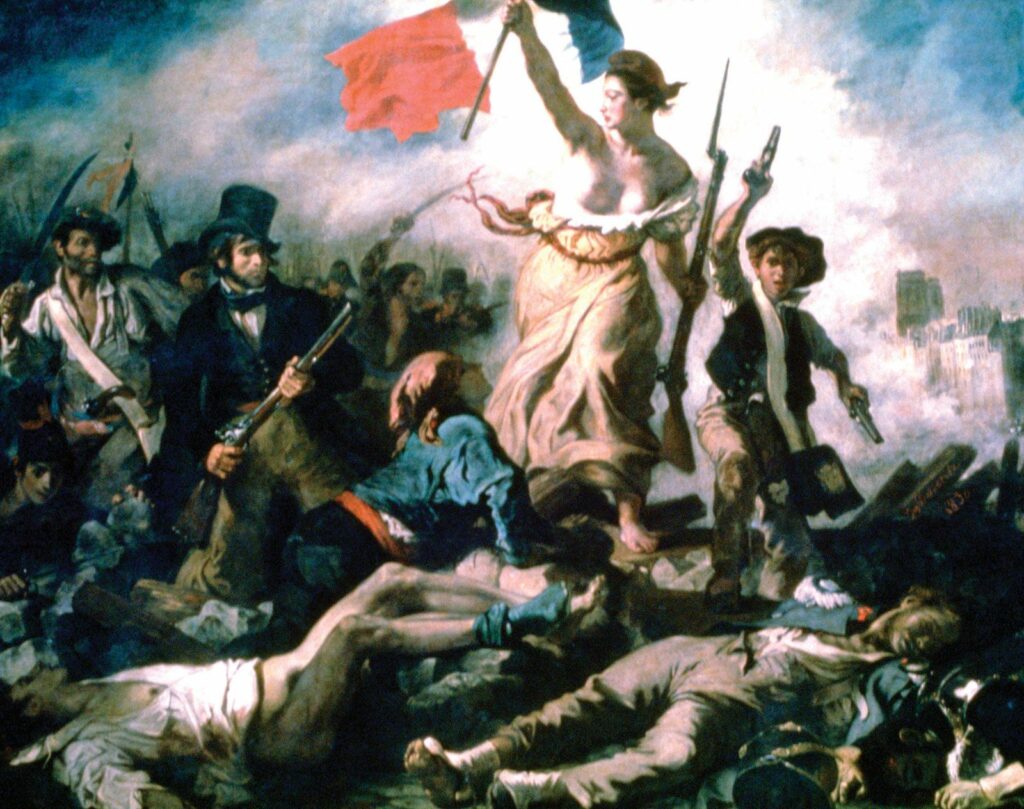
In the previous chapter I tried to outline, with realism and even with a bit of brutality, what the contours of this industry are, to try to understand what, in all sincerity, pushed us to start our career in it, and above all what it pushes us to continue our efforts, perpetually trying to grow, to improve, to advance, seemingly without a moment’s respite.
There is much positive in this, indeed, since movement and transformation, in addition to being the “raw material” of our profession, are also an indispensable index of vitality. However, it is also an impressive individual commitment, which transcends that required by many more common jobs.
To do this I will start, as in many film scripts today, from the end.
You should know that I started this profession in a completely unexpected way, out of my original life plans, a many years ago, and I can well say that, in this rather long period of time, “I’ve seen things you people wouldn ‘t believe…”
In particular, I can say that I have experienced firsthand, from within my professional career, at least 4 important global “revolutions” of this industry, plus some intermediate upheavals of lesser impact, which, over the last 40 years or so, radically shaked the foundations of its methods, hardware and software systems, costs, technologies and manufacturing processes. Dragging into this process of radical change all the connected human resources, skills and perspectives of the artists, i.e. of the people who have worked and work there, forcing them to undergo continuous and tiring technical and creative updating, and at the same time subjecting them to substantial rearrangements in roles, hierarchies, salary classifications, short and long-term career prospects.
It is a great, continuous and exhilarating challenge, which certainly contributes to making this profession an engaging adventure, always open to possible great personal and professional satisfaction.
However, as President Mao Zedong once wrote: “Revolution Is Not a Dinner Party”, so it cannot be denied that, as happens in any respectable revolution, growth and changes always occur requiring a significant human cost, leaving hundreds, thousands of people by the side of the road; human beings with their families, many of them renowned and very skilled artists or technicians, among all those who do not endure, or were unable to adapt to the fast changes on time, or that simply suddenly found themselves to be experts in obsolete systems, erased by the lightning fast technological changes.
I will try to summarize this whole long but exciting story in a few fundamental steps.
The First Revolution: “From Analog to Digital”
That is, simplifying as much as possible, the transition from the 35 mm camera stand to the digital scanner.
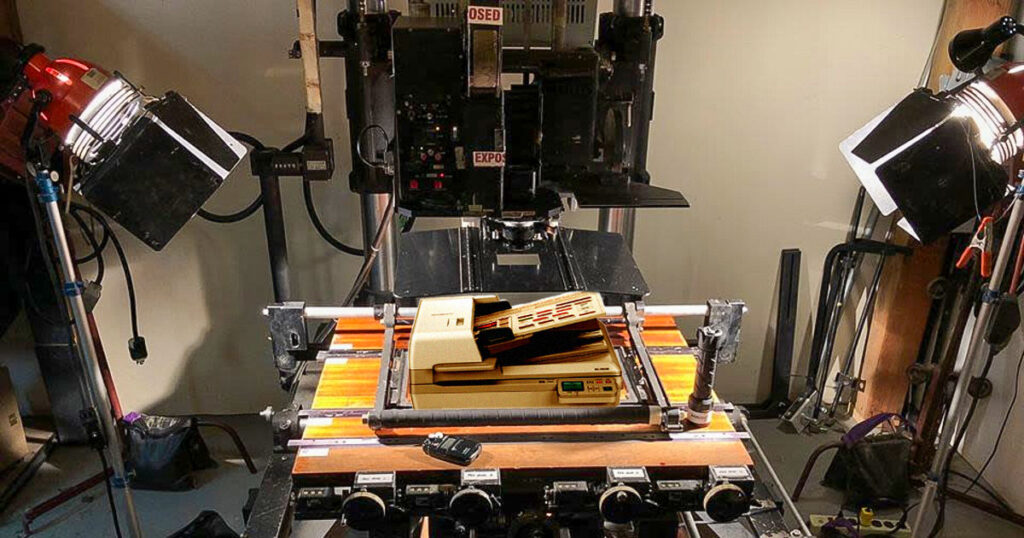
A transition that occurred rather suddenly, as soon as technology made systems available that were powerful enough to acquire and process high definition images, and made the final quality competitive with that offered up until then by 35mm (or higher) film format.
This allowed a processing cycle, once the costs of the hardware and software systems, which were very high at the time, were amortized, dramatically faster and cheaper, while at the same time allowing an almost immediate clear improvement in the quality of the final product: no more limits on scene levels (until then limited to 4/5 due to the imperfect transparency of the cels), no more waste due to shooting errors, almost unlimited possibility of modifying the image up to the single frame, even afterwards, perfect image stability, total control over the colors, and many other unrivaled benefits.
For some time, at least for feature films intended for theaters, the digital image continued to be exported and distributed as film stock, and it would have taken a few more years to set a completely integrated digital cycle, but the path was now clear and definitive.
This great feast for producers and artists, however, has left a large mass of people penniless, employed in sectors that have suddenly become obsolete: from the crowded Ink&Paint departments, largely female, to the camera stand operators, to the technicians of the film developing and printing labs, up to the specialists of sophisticated systems such as the Truka and the Moviola 35mm, on which the VFX and the editing had been carried out up to that point.
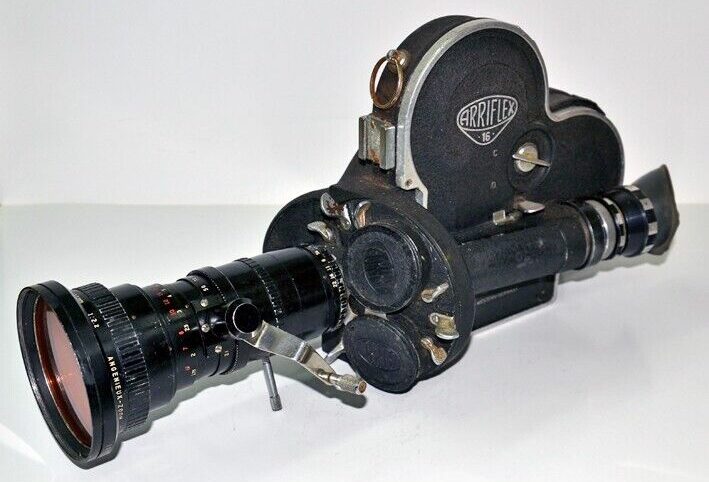
FastFood PT
There was a minor “revolution”, almost contemporary with the main one, but which directly affected us as animators, namely the introduction of digital pencil test systems, soon also available at an individual level (I remember my very first personal Pencil Test, running on an Atari system and requiring only a small camera and a sufficiently steady and uniform lighting system).
This was certainly a 100% win-win, no-loss “subrevolution” for us animators.
The pencil test, as perhaps some still remember, was first made on film stock (I used an 16mm Arriflex, which I still jealously preserve), and then had to be physically sent to a D&P lab; the result could only be seen the next day, if it went well, but also days later, if the laboratory was not exactly a stone’s throw from home.
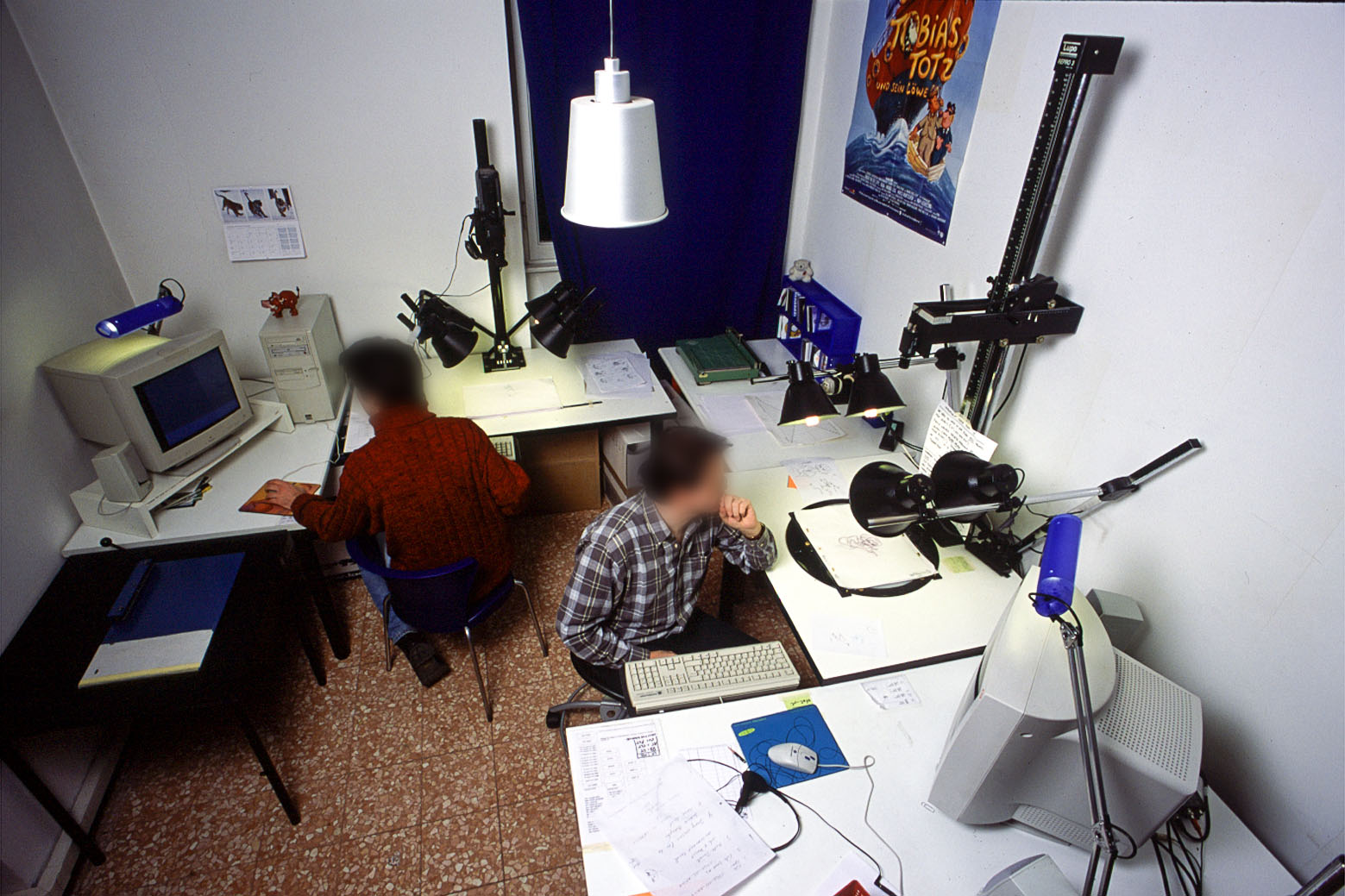
former NightFlight Animation Studio in Milano
Having the possibility to test your animation, even in the early phase of a sketch or thumbnail, at any time, and being able to see the result practically in real time, was undoubtedly one of the most significant positive “revolutions” that occurred in our profession. Not many here, I think, experienced this fundamental step firsthand, but try to imagine the euphoria that this innovation unleashed among the animators working at that time. Not to mention that this same innovation has led to a drastic acceleration of the learning process: while before it for the maturation of an animator at the top level (at Disney level, I quote from F.Thomas & O.Johnson’s volume “Illusion of Life” – the Holy Bible of our profession) took on average at least ten years, suddenly these times were reduced to half, or even just two/three years, if the artist had good talent and was willing to work really hard.
I do not exclude that this fundamental innovation was the basis of the great “flowering” of animation in the 70s/80s, launching onto the market a previously unimaginable quantity of young talents who were incredibly skilled and ready to assert themselves.
In the next article I will talk about the second shocking revolution I was in time to witness: the advent of 3D animation.
The Second Revolution: “Pixart”
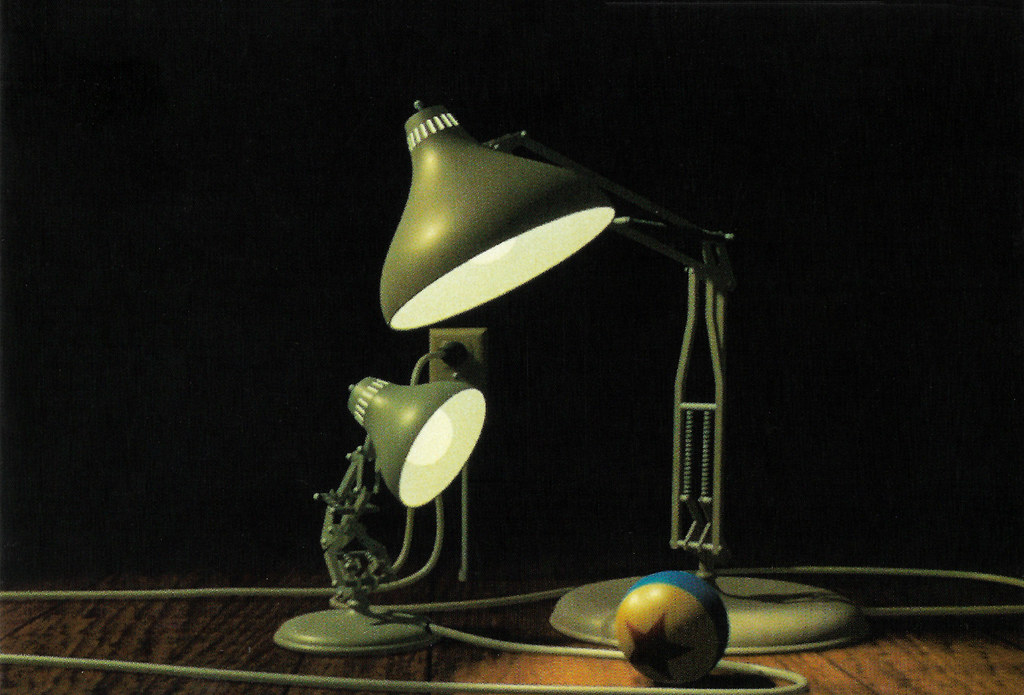
In the previous article I tried to tell how I experienced what was the first modern revolution that involved the animated medium, after the “historic” ones that occurred with the advent first of the cel, then of sound, and finally of color processing; that is, the transition from traditional analog to modern digital processing.
The second great revolution I was able to witness was triggered by the irruption into the field of that unrepeatable and extraordinary laboratory of ideas and technology (it is no coincidence that Steve Jobs had a hand in this story) which was Pixar in San Francisco. An advent that messed up the cards in play and caused a real restart from scratch for the entire industry in the sector.
Mainstream productions had now reached, driven by the previous revolution, a phase of maturation and sophistication unheard of until then. At the same time, production costs had risen vertically, as had the time required to produce a single feature film.
The products continued to have good success, but the public had quickly become accustomed to that visual quality, and demanded more and more new stories and emotions, while the competition between the Majors (in particular that between Disney and Dreamworks) pushed to an ever more unbridled rush to the “spectacular spectacle”, to the “never seen before”. These were the “happy” times I mentioned above, in which animators (not only in D & D, but also, as a result of the drag effect, to a greater or lesser extent, throughout world production) were in demand, sought after, well paid, even pampered by the Production Companies. I myself was already part of the game at the time, and I must say that I worked – and earned – quite a bit in that period.
But the times (and few completely predicted it, even if the clues had been clearly visible to everyone for some time) were ripe for a definitive breakdown of balances which now seemed stabilized and set to continue forever.
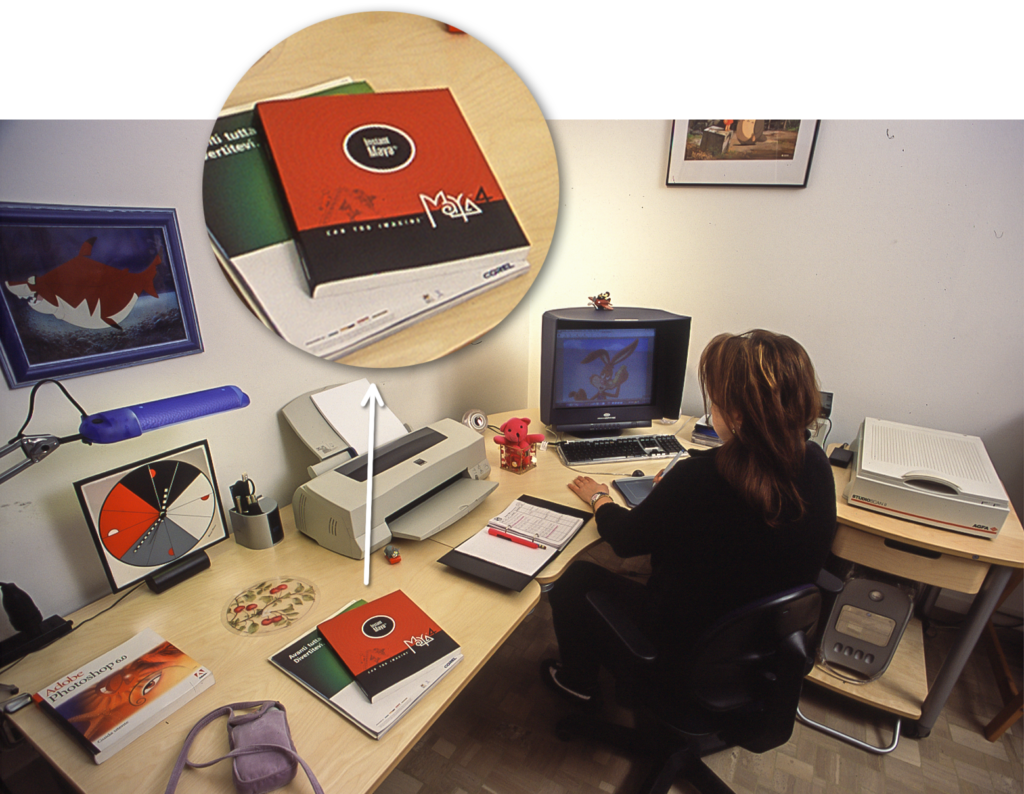
Paradoxically, it was not Pixar (which showed the way, but which was long considered just a silly “hi-tech experiment”) but Dreamworks, in the figure of its CEO Jeffrey Katzenberg, who pronounced the definitive “death sentence” for the traditional 2D feature film production.
For the first time in history, such an important and decisive industrial and cultural turning point was officially and explicitly sanctioned in a public, almost institutional speech, which established without mincing words, a “before” and an “after”: cold economic calculations and of industrial opportunity, they explicitly equated animated cinema – up until that point, for better or worse, a mainly artistic and cultural product – to any manufacturing industry, such as a Detroit car factory or, at most, one of the Silicon Valley microchip companies.
This radical turning point, without leaving much time for a minimum of gradualness in the changes, immediately resulted in the almost instantaneous loss of an entire category of skills and highly specialized artists and technicians, including, this time, also animators, figures, as we saw before, essential to the very existence of an animated film, but that they too now had to pay their heavy tribute to innovation.
Personally, I have a vivid memory of the moment in which I learned, during an Annecy Festival, that the production I had been involved with in the early stages of production for a nice feature film project had decided overnight (without even having the necessary technical means and workers yet) to “upgrade” the entire project from 2D to 3D.
Production suddenly stopped, while waiting to develop the necessary know-how, and I and others, even though we were already under contract, were “dumped” without too many compliments, and had to quickly find survival alternatives.
In any case, many of us have changed jobs, or sectors, or roles (for example by throwing ourselves into storyboards, where the great drawing ability of animators is naturally highly appreciated), or we have adapted well or badly to the trend, as I did, acquiring enough knowledge of 3D systems in the shortest possible time to avoid exiting the market, and, finally, survive. Luckily my previous experience helped me a lot in this endeavor, but it was neither easy nor cheap.
A Stereoscopic Dream
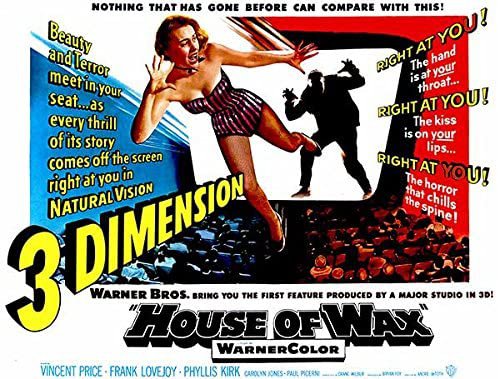
Also during this process a “minor revolution” occurred, which however largely failed, and which I like to mention only to demonstrate that technological achievements in themselves do not always produce lasting and historically significant changes.
I’m talking about “stereoscopic 3D”, a direct offspring of the standard 3D pipeline. There was a brief period of enthusiasm, driven by the majors who were aiming for a new form of entertainment and involvement of the people, such as to bring them back to cinemas, where audience attendance was progressively and alarmingly declining.
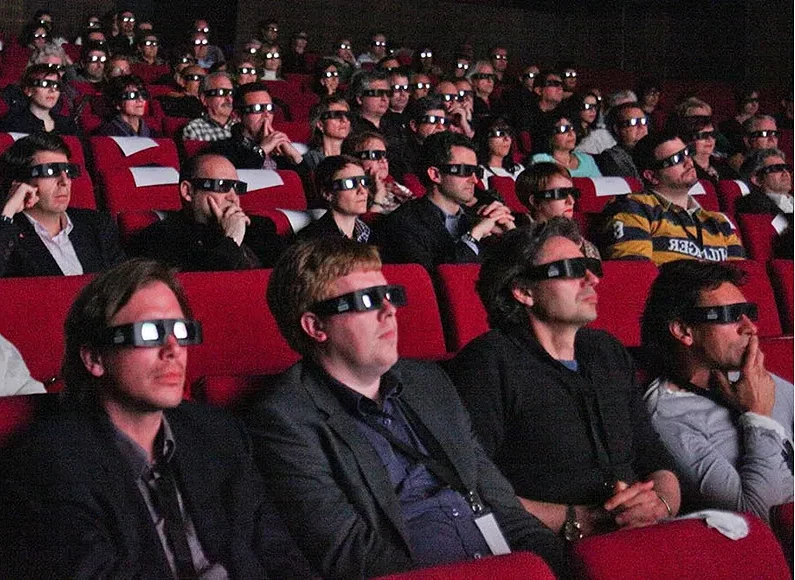
It was understood quite quickly, however, that it was not an authentic revolution: the technological component was actually not very relevant (today any professional 3D application off the shelf has its own stereoscopic setup), while the visual experience offered was not so engaging as expected, also forcing the public to wear an individual optical “prosthesis” that not everyone willingly tolerated, and which for everyone still constituted a distraction and a break in the “suspension of disbelief” necessary to enter the narrative, and therefore achieving a good emotional and sensorial participation. All this without there being any authentic evolution of the language that would justify its use for the narration of the story, and further inflating production costs without this producing a proportional increase in box office receipts.
In the end there was not a total general conversion of the theatres, as happened first with sound and then with colour, and today stereoscopic 3D remains in use only in a few selected theatres and IMAX, but without really affecting the success of a mainstream production, which now, as we will see, has taken other paths.
In the meantime, in fact, another “revolution” was looming, which would soon prove to be the most radical of all the previous ones.
The Third Revolution: “Internet Cafe”

In the previous article I summarized what was up now the most important cultural – and technical – revolution in which I had the opportunity to witness, and actively participate firsthand.
The great “classic” animated feature films, those that has accompanied us since childhood and which later, already working in the field, so fascinated us, those unforgettable masterpieces such as Lion King, Tarzan, The Prince of Egypt, Spirit, had been declared dead, and had been replaced in a few years by other products, some of them undoubtedly of great impact, which established a truly new frontier for animation, and which certainly did not fail to excite us, constituting for all of us a final and most demanding challenge for our skills and creativity.
In the meantime, however, a third “revolution” had already begun, this one truly epochal, something that modified for the first time in such a radical way the production downstream of the chain, i.e. on the part of the public, and no longer only upstream, on the part of the industry as had happened until then.
It was an initially underestimated revolution, which little seemed to involve our particular world, which was engaged in other challenges and more structural changes, focused mostly at the production of new images, ideas, contents capable of satisfying an increasingly restless audience, always eager for new, always “never seen” stuff.
Anyway, everything started relatively slowly and gradually, somehow under the radar, because the innovation, in order to really involve a significant part of the interested industry and its audience, needed large superstructures (ADSL, VDSL, Fiber Optic nets), which in turn required targeted and large-scale political and economic decisions, both nationally and internationally.
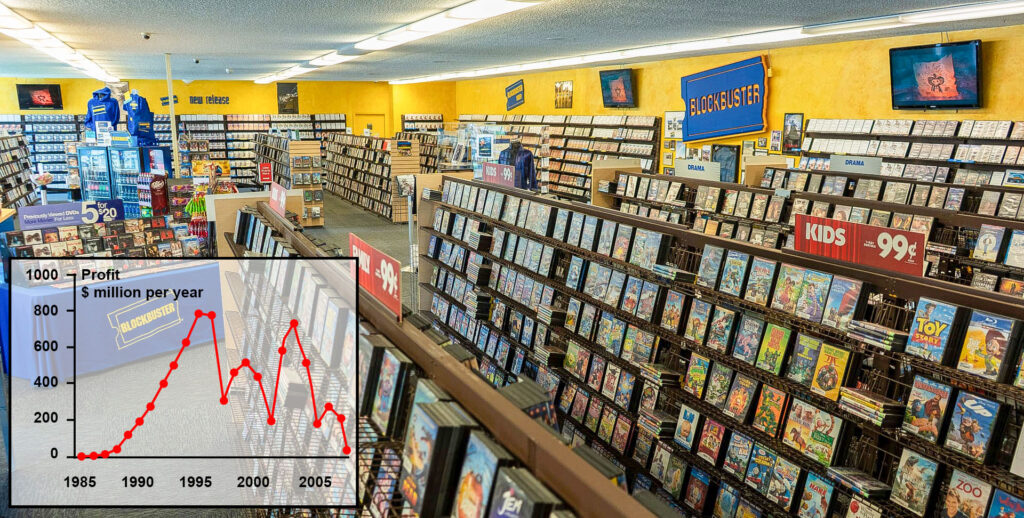
The real turning point began when technology made available on one hand truly widespread broadband/ultra-broadband connections, and on the other affordable devices compatible with bulk video material at adequate (i.e. high) resolution.
This set in motion a whole chain of effects that caused very profound and definitive changes in every sector of our industry in particular.
All this is actually also still in progress, something which we are all experiencing here and now, the ultimate outcomes of which are still difficult to predict, but I would like to point out here some of the effects that seem to me to be the most obvious and relevant for our discussion.

I can say that the massive transition from theaters and traditional broadcast TV to home streaming, with film packages available at any time of the day, which can be viewed on a whole range of different devices (from 70″ 4K smart TVs, to laptops, to tablets, and smartphones), with ways of enjoyment that are always different from each other and constantly changing, has led to a progressive crisis of the traditional cinema, and to an equally progressive shift of mainstream production from Theatrical Feature Film towards stream TV Series.
Furthermore and consequently, the latter have become increasingly competitive with the traditional 90-180 minutes film and its narrative models, both from a quantitative and, even more important, a qualitative point of view.
This trend has affected both live action production and, and probably to a greater and more dramatic extent, animation production: I mean, even more massively than in live action, mainstream animated production has shifted to TV series.
I believe that apart from a few majors – perhaps not even those – no traditional production company could sustain itself solely on animated feature films, while the ever-increasing demand (even if now we are starting to feel a slowdown) for new seasons of TV series pushed a large number of production houses, old and new, to rush to occupy this market.
While in the past the “TV series” production was a bit like the Cinderella of the world of animation (with the exception of a few of extremely successful and long-lasting American TV series, which we all know well), where Western companies relied mostly on the large Eastern – Korean, Taiwanese and Chinese – “factories” to produce huge quantities of footage of mediocre quality, if not frankly low or bad, now the TV Series – as has also happened in Live Action – has become the “backbone” of world production. Increasing not only in quantity but, as I said, in quality.
…And bringing “traditional” 2D back into the limelight, surprisingly, as a side effect.
Te latter was really a very interesting effect, as far as we were concerned, because while 3D production was starting to be a little too expensive for TV series, or even too cheap looking compared to what the public was now used to see, and therefore not particularly suited to supporting seasons of dozens of episodes lasting tens of minutes or more each, spanning entire years of broadcast, well, the “old fashioned” 2D could still boast greater flexibility, full creative freshness, and the possibility of creating very simple and stylized worlds, strong characters and original stories, at lower costs, however still capable of striking and engaging the emotion and imagination of its audience, especially children; an audience that is now fully independent in its choices, offered not only on TV screens, as we have seen, but on a wide range of mobile devices that the market makes available to anyone, regardless of his age.
I would also add that for 2D animation, the loss of visual quality on the tiny screen of a smartphone is often much less relevant than the liveliness of the images, the brilliance of the stories, the fantasy of the imagery typical of the “old” 2D technique, appropriately updated.
Paper-less, Pencil-less
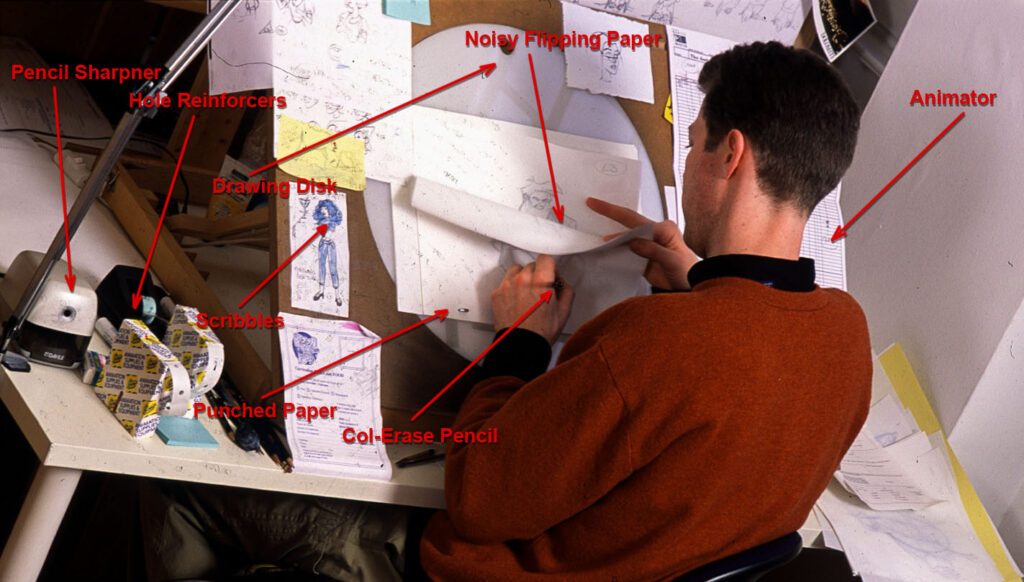
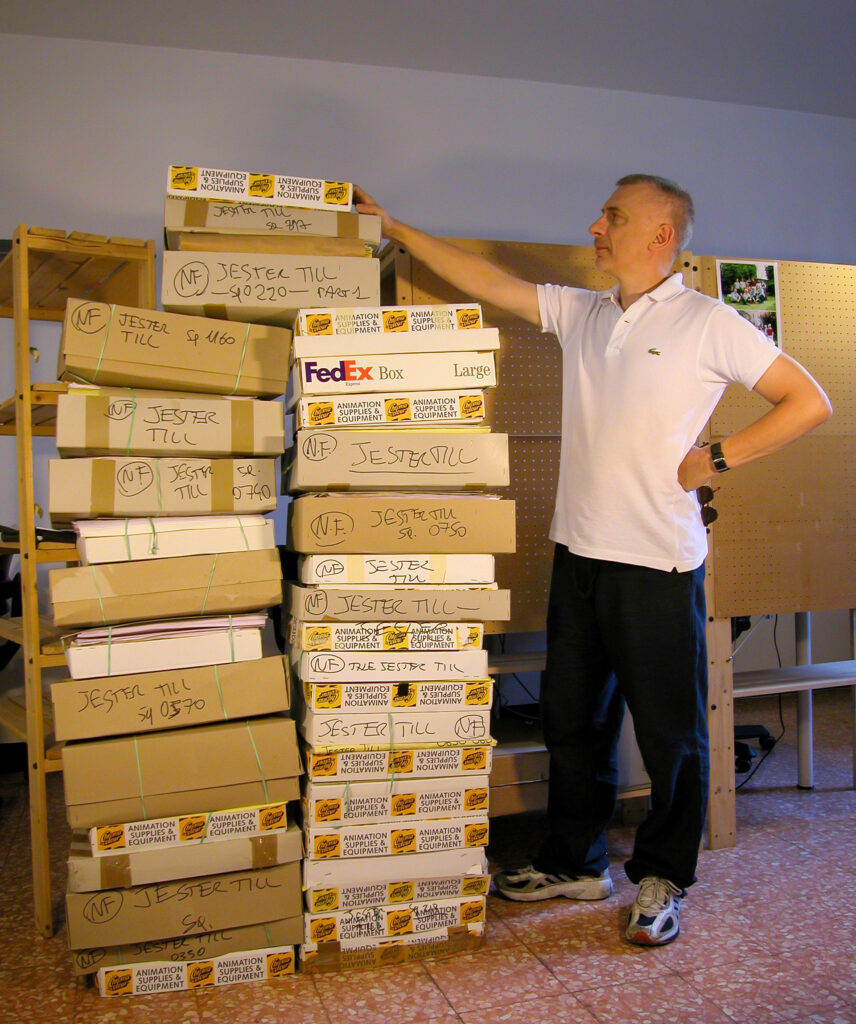
This small but great “intermediate” revolution as mentioned in the title above, was made possible precisely by the lightning technological evolution with which we have dealt so far, and has directly resulted for us in effects that are much more significant than those that anyone else (not directly involved in the work of an animator or other animation artist) could ever imagine.
The increasingly widespread and pervasive diffusion of paperless systems was made possible, as I was saying, by the spread of interactive graphics tablets and processing systems such as TVPaint and, above all, Harmony, which recently has become somewhat one of the touchstones for the entire sector.
This change has led to a series of substantial consequences on our work, some of them not at all positive.
Of course, just to begin with this, many of us, after years of working and drudging with paper and pencils, have had to struggle quite a bit in the transition, to find a feeling with the stiff and slippery surface of the tablet, and a handling feedback that is very different from that of the pencil tip dragging on the paper sheet: a real physical rehabilitation path that caused me, for example, considerable back pain for several months, due to the contracted posture and the completely different control required by the digital pen. But it was an inevitable process, and now the Cintiq dominate pompously my work desk in place of the old – much loved and much hated – wooden lightbox and its heavy white plexiglass drawing disc – which moreover had to be handled very carefully, because it had the bad habit of falling painfully on your lap. I still keep somewhere more than one of more than one of these devilish boxes, all closed for years in their black bags, complete with their shiny chromed steel pegbars.
However, I must say that I would never be able to go back: there are so many objective advantages that this technology offers us, and working by noisily endlessly flipping punched paper now seems so ancient and outdated to me.

All these innovations, in some ways so powerful and full of new exciting opportunities for everyone, including control, precision, speed, and free creativity, have however also led us to what is the actual and hard panorama of animation industry (at least in dominant TV series production): an overall sight which is neither nice nor exciting at all.
Enormously tightened timescales, quality requirements completely disproportionate to the actual working conditions, wild limitless and often meaningless retakes, compressed, often unsustainable wages, very harsh recruitment selection calls, indiscriminate use of entry “tests” (even for senior professionals with decades of experience), great frequency and ease of being fired, and so on.
All this brutally brings us back to the main, big underlying question: why did we get into this madness? Why do we continue to work and fight to endlessly improve our performance, while everything, at least in this particular industry, seems to push us towards a completely industrialized production? While the individual artistic contribution seems to be now reduced to a pure, almost automated, repetitive execution?
Are we still artists, or are we just workers?
And if we are workers, is our individual contribution still significant and unique, or is it now purely numerical and replaceable? Or, in Marxist terms, alienated (entfremdet)?
We must understand these essential points, because a new, unexpected and unpredictable revolution is about to break out, which is about to upset the entire panorama of our industry from the foundations, and only knowing where our foundations are rooted maybe we will be able to survive.
The Ultimate Threat: “AW! Artificial Who?”
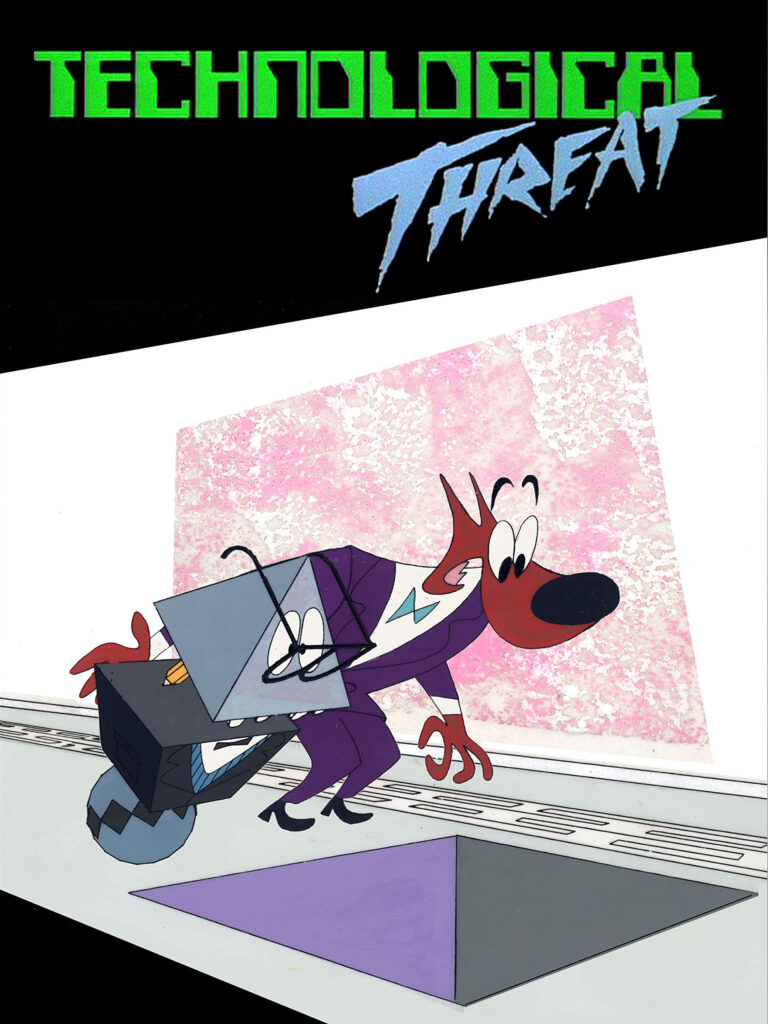
So, up to this point we have witnessed a series of very radical changes in the productive and creative structures of this particular industry, the factory par excellence of the very “stuff that dreams are made of”.
Changes, or “revolutions”, as I like to call them, which have profoundly changed the working methods, the creative potential, the production organisation, the very perception and expectations of the audiences; all under the driving force of highly accelerated technological development, which has made increasingly sophisticated and powerful tools available for image processing and their diffusion on a large scale.
This series of changes, as we have seen, led to a dramatic change in the skills required to the workers involved, and at the same time caused a very significant contraction in their number – only partly compensated by the increase in demand on the market for new products – and the definitive loss of a whole series of technical and artistic specializations linked to systems made obsolete and abandoned forever.
However, all this, albeit at a highly accelerated pace, had followed an usual path, common to all modern technical and productive progress, without affecting the most intimate and profound foundations of the creative and imaginative process, and consequently its final value in society and in culture
Let me explain better, starting from the most classic and obvious of the available examples of “industrial revolution”, that of the transports:
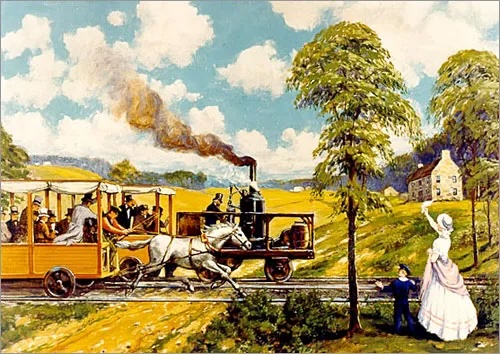
here the transition of movement and communication from animal traction to mechanical traction led to a shocking chain of events, which radically modified not only the methods and techniques of movement, and their availability to an increasingly wider public, but also to a substantial modification of the concept of time and space from the point of view of the human perception, and to profound upheavals in social organization itself.
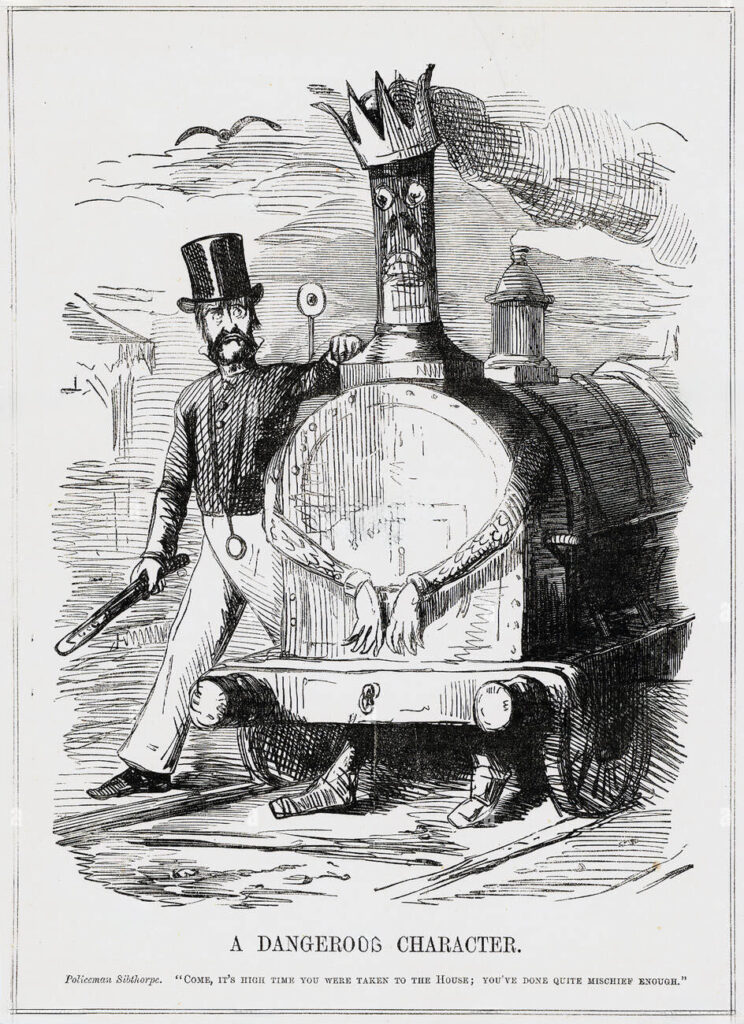
However, all this has not changed the concept of “transport” one millimeter as it has been established for millennia in all human history: the movement of a body (human, artefact or object) from point A to point B, via a vector (legs, horse, cart, car, jet aircraft), and along a specially engineered physical structure, linear or network (path, road, motorway, railway, airport).
To get closer to our perspective, i.e. the transmission of information through images, let us now think about the epochal transition of the visual reproduction of reality from manual figurative art (graffiti, painting, drawing) to optical-mechanical reproduction (photography). Also this led to a dramatic change in perspective, technical, aesthetic and functional. I cannot delve into this point further, as it would require an entire essay in itself, but even in this case it should be noted that the change did not involve its basic connotations, i.e. [A] the selection and reproduction of a visual subject (landscape, portrait, object ) [B] by a subject (designer, painter, photographer) to transmit it [C] to a final recipient (individual or collective, contemporary or historical), for the purposes of factual, aesthetic or cognitive information.
I focused precisely on these examples because I consider them essential to clearly grasp the true scope of the “revolution” in which we are all involved at the moment – and not only in our particular field.
It is no longer just a change in the technical and production apparatus, on the contrary, we can say that the technologies involved are not undergoing a truly substantial evolution, if not, as we will see, mainly of a quantitative nature.
Instead, perhaps for the first time in history we are witnessing a mutation of the profound, ideological and cultural meaning of the very concept of narration, and therefore, ultimately, of information –AND creation.

That is, in the basic scheme: [human subject > generates information > transmits it > to another human subject] a “foreign” element is introduced for the first time which interrupts, so to speak, the cognitive chain, which therefore becomes: [human subject > designs machine > which generates information > transmits it > to another human subject {or machine}]
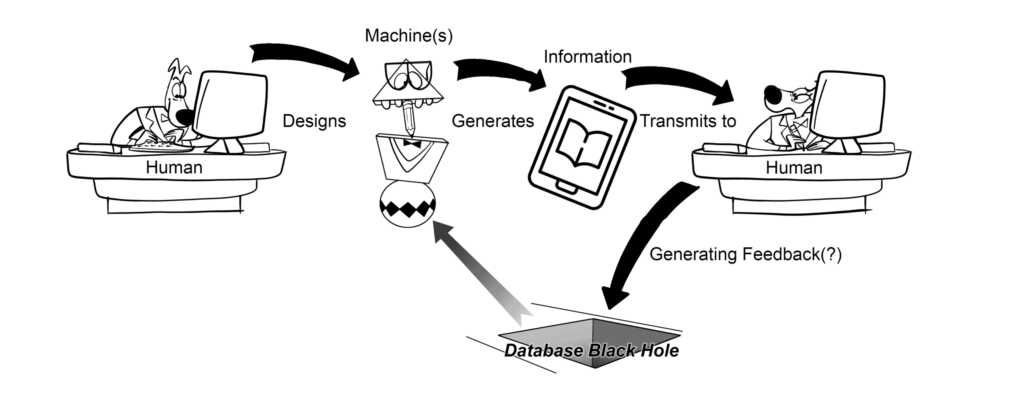
Of course, I am referring to the AI, Generative Artificial Intelligence, which now, at the beginning of the millennium, seems capable of overturning the foundations of most human information and communication systems; and since our industry is essentially one of these structures, we will be (and already are) directly involved.

Said in the simplest and most objective way possible, we are no longer dealing with a well-defined group of single technologies, but with a complex and widespread “system”, in which a series of technologies that we already know, enhanced and reorganized around a precisely focused and integrated project, are the actual engine; but which globally produces effects far broader and deeper than those produced so far by the individual technologies involved.
The previous “digital revolution” made available an immense mass of data (information) in a great part produced by ourselves as users – often unconsciously, and for free – then collected, deposited and recorded potentially forever in massive digital databases.
At the same time, increasingly powerful and faster processors have been developed, which are now finally capable of productively processing that mass of information and data, driven by specifically designed sophisticated algorithms.
This “machine” (let’s call it this way as a whole) no longer limits itself to processing information, but programmatically aims to GENERATE new information, drawing on and reprocessing millions of GB of stored data, with a process which, on the model of the human cognitive system of synapses and neural connection, aspires to literally replace it in the highest functions, i.e. the creation from scratch of “original” (i.e. previously non-existent) concepts, ideas and images.
The risk, or rather the current and real danger, at this point is clear and resounding- without even dwelling on the side effects, which are also very alarming, of this whole process: this system aims, openly and without any scruple – moral, ethical or social – to SUBSTITUTE tout court, for fundamentally economic and production efficiency reasons, an entire category of human resources, or even the mere human presence along the entire production pipeline as we have known it up to now, from screenwriters to editors. And among these, by the very nature of their work, animators are among the first to be involved.
The picture of the industrial producer from old trade jokes “I press the button, the film comes out” seems to be within reach, and it is no coincidence that in Hollywood for some time now some categories of artists (notably screenwriters and actors) are in strong agitation to try to somehow slow down and limit this seemingly unstoppable process.
I deliberately wrote “apparently unstoppable”: well, actually I have conflicting thoughts on this topic, apart from the heavy human costs that all this will certainly entail.
On the one hand I think it is completely useless and unproductive to oppose a process of technological evolution, it has never been possible in the past, not even against nuclear proliferation.
On the other hand, I think that the nature of this particular “change”, much like the nuclear issue mentioned above, could be not an evolution, but rather a dangerous resurgence of human hubris destined to cause more harm than good, like in a paradoxical self-destructive delirium.
But let’s try to reason without prejudice or too much emotion.
In fact, technological evolution, as it has always happened up to this point, appears to us as something inevitable and unstoppable, and once started it goes rolling down the hill, like a self-feeding snowball, rapidly enlarging until become an avalanche that can overwhelm everything in its path.
In fact, this has happened until today: despite the Luddite movements, animal propulsion has abandoned the gates of History, and now we can go, if we want, from Paris to New York with a direct flight, in a few hours.
Therefore, as has always happened when faced with great turning points, we only have three possibilities: that of oppose them, thus very likely taking the losing path, that of enduring them, passively taking all the positive, but above all the negative consequences, and that of riding them – and trying to dominate them. After all, this is why many of us get a driving license: to be able to use to our own advantage a vehicle made available by the technology (which in any case we do not dominate at all in its technical, production and market mechanisms).
However, as “artists” – if we can and want to define ourselves that way – the stakes are even higher, and at the same time much more complex.
Here it is not simply a question of transporting us – or having ourselves transported – from one point (of the city, of the country, of the universe) to another: after all, when (and if) safe automatic driving systems will be launched, such as are under study and in advanced experimentation, (and without prejudice to the limits imposed by the environmental impact, which will certainly condition this whole mechanism in a far from distant future), for us individually little will change in the meaning of what we are doing: we will continue to move, more or less comfortably, with greater or lesser independence, in more or less rapid times, with greater or lesser energy and economic efficiency, with greater or lesser environmental impact, from point A to point B.
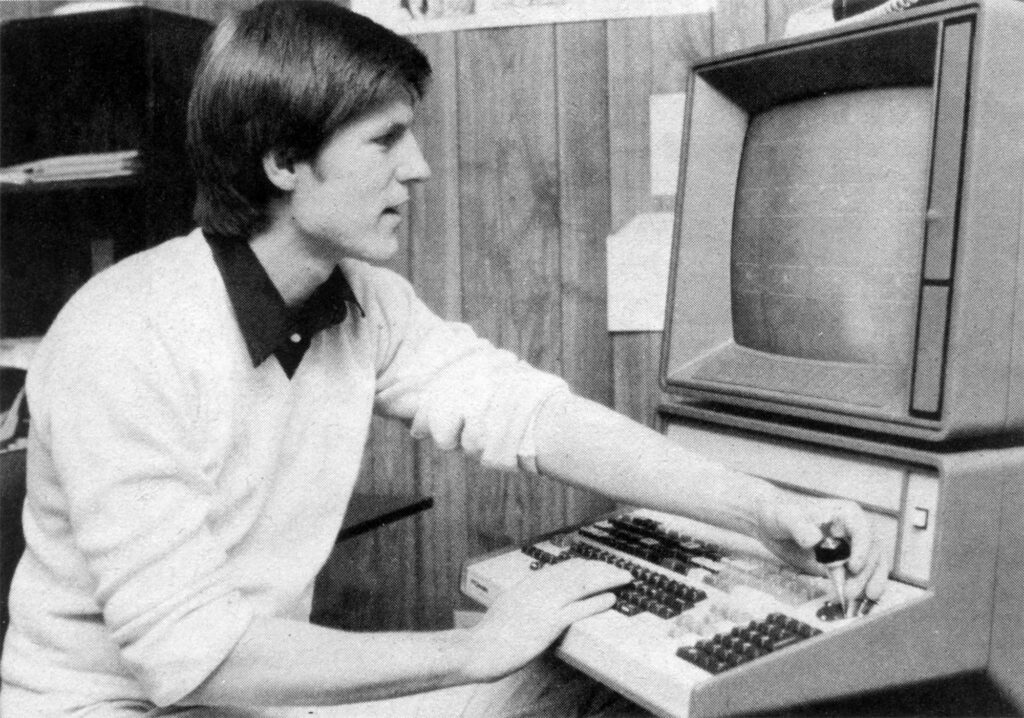
It will be a very different matter if, in our place, in the place of our animation desk, tablet and computer, a AI virtual robot will be installed, as in the prophetic short film by Bill Kroyer mentioned at the beginning. And it will be a very different thing not only for us as artists or filmmakers, but also for ourselves and for anyone else as an audience.
What will change then? What risks loom, both for us as filmmakers, at one end of the chain, and for the audience at the other? What can we do, concretely: fight back, adapt or ride?
A Brief Interlude: “AA, Artificial Art?”
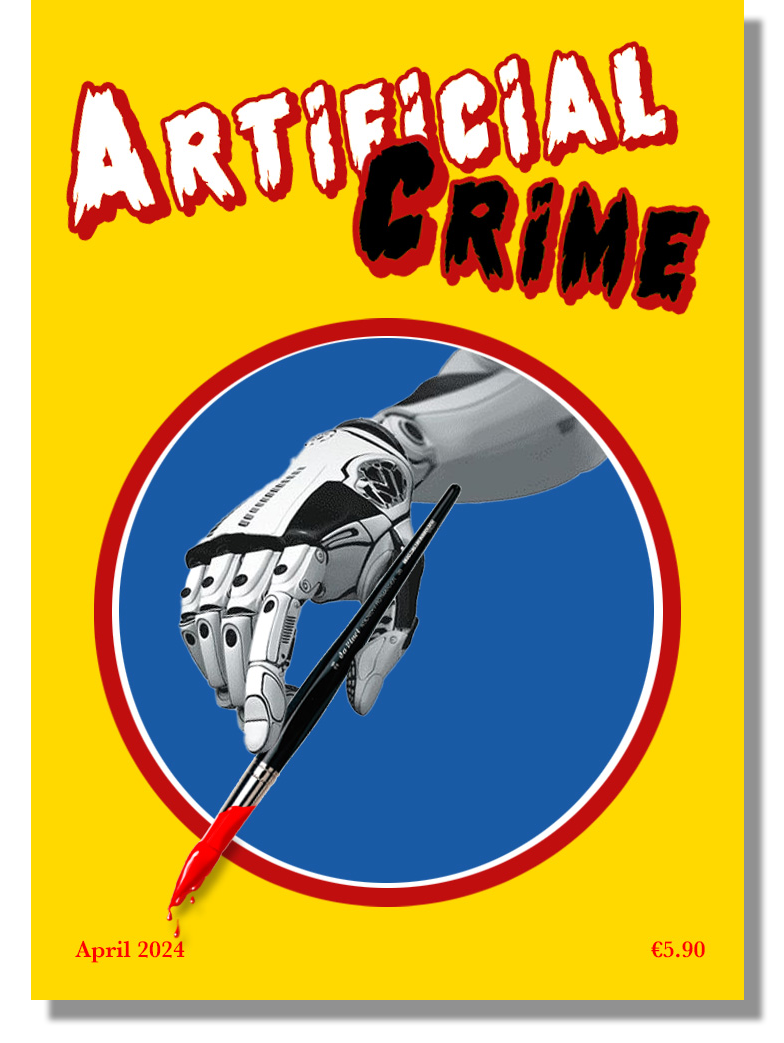
So far we have seen, and it is History that has taught us, that we can’t simply retreat and oppose this new, more global and profound technological “revolution”, which is also, and perhaps above all, conceptual and cultural.
In other words, it wouldn’t be productive to retreat into a restricted, isolated Amishlike community, each cultivating our own beautiful talent, making our delightful little short films, and watching them among friends, or screening them at some specialized festivals, maybe even winning some cute glittering category awards.
This thing, today, may be conceivable in other fields of the cultural industry, such as Poetry for example, but it would not be sustainable for animation, which is too linked to the cinematic industry, and therefore is first of all a matter of a collective creation, industrial production, marketing, distribution.
However, on the other side of the question, this new technological system turns out to be so complex and pervasive that even the possibility of being able to take the reins of command more or less directly appears to be a mirage, at least for the vast majority of people.
The control levers of this particular technology is, and will certainly be in the future, in the hands of a small elite (to use a term that I don’t like, but in this case it seems appropriate) of technicians/programmers in possession of the language necessary to create and educate the algorithms that supervise all its powerful processing and, above all, generative capacity.
All we have left is to adapt to it, then? But how?
To attempt to answer this crucial question, I would like to take a step back, and step outside the scope of our particular sectoral perspective.
Let’s imagine being in our living room at home, in a moment of tranquility, leaving aside for a moment our anxieties, all our ordinary work problems.
We insert a music disc into the CD player (it’s a somewhat “millenial” scenery, I realize, but it works with any album or song, of any genre or era, listened to from any digital or analogic device).
To give a concrete example, I will use one that I know very well and love, taken from my personal library.
So let’s listen to the dreamy adagio from W.A.Mozart’s violin concerto no.3 K216, soloist Mr. Gidon Kremer:

Therefore, we know that what we perceive are essentially a certain series of sounds, organized in a certain way, according to precise, historically consolidated canons of style, and we also know that, probably, with an appropriate spectrographic analysis, we would be able to reproduce “perfectly” these same sounds in an “automatic” way, using an advanced synthesizer, starting directly from the Author’s score, without mediation.
Let’s leave aside Mozart’s genius here, which is another step to climb, a much more imposing, not to say insuperable, challenge for any possible and imaginable generative AI.
Instead, let’s simply focus on execution. And let’s ask ourselves, while we listen to the song, what is it that really excites us, what is it that profoundly constitutes this experience, and makes it unique, memorable and in some way unrepeatable.

Well, it is certainly not the sequence of sounds itself: already in the 18th century any mechanical piano was able to reproduce a score from a roll, even a piece by Mozart himself.
What excites us comes mainly from our culture and our awareness as listeners.
Awareness that this “sequence of sounds” was thus imagined, organized and committed to paper by an 18-year-old human being named Mozart approximately 250 years ago. And now we can listen to it because another human being, an excellent violinist like Gidon Kremer, performed and recorded it a few years ago (I think in 1996), using a priceless instrument manufactured, with immense mastery, even before the Mozart’s era, by another human being, the great luthier named Nicola Amati.
Another example, now in the figurative art field: why do many of us (and I hope there are really many of us, given that our profession has something to do with images) go to visit museums? Art books aside (which belong to the first “era of technical reproducibility” of which Walter Benjamin wrote in his famous essay “The Work of Art in the Age of Mechanical Reproduction” (Das Kunstwerk im Zeitalter seiner technischen Reproduzierbarkeit – 1935), which I will also talk about later), to examine a painting and grasp at least part of the emotions it conveys to us, today it is enough to type the title and author into a search engine and we will be able to find a multitude of reproductions, as well as descriptions, critical essays , bibliographies, etc.
Yet the experience we can have in a museum is and remains incomparable, so much so that many of us willingly travel even long distances, perhaps undertake a special trip, pay the entrance fee to the exhibition rooms, and so on. Why?

If we happen to be in Munich, for example, we can visit the local Alte Pinakothek (which I know it well, since I lived for years between Munich and Milan) where we can meet face to face with one of the most exciting paintings that I ever remember knowing so closely: the famous self-portrait by Albrecht Dürer, dated (autograph on the painting itself) exactly 1500.
What is it that excites us so much about this close encounter? We have certainly already seen dozens of reproductions of this famous painting, some of them even of high quality, however there is something ineffable that invests our experience as observers, permeating the artwork in an inseparable way, and certainly from the first moment this will be imprinted on our memory, illuminating every other vision of the same painting that we may encounter in the future as a “simple” reproduction. Something that certainly surpasses the infinite combinations of RGB (or CMYK), color depth, screen resolution, print quality.
As in the previous example, we simply KNOW, from our culture and experience, that a young (in his 29) man placed his brush soaked by a suspension of particular pigments in a base of linseed oil on that very canvas, to “reproduce” his vision of himself, and fix it potentially forever. THAT is the canvas, THAT the pigment, THAT the brushstroke, and THAT is the gaze captured by the vision of the author who reflected on himself, physically and spiritually, and which today, over 500 years later, reaches us, still in direct dialogue with us.
Certainly at this point many of you will have recognized in this whole discussion the emergence of a fundamental concept which was formulated for the first time by the Walter Benjamin mentioned above, in his book: the concept of “Aura”.
To summarize his original thought:
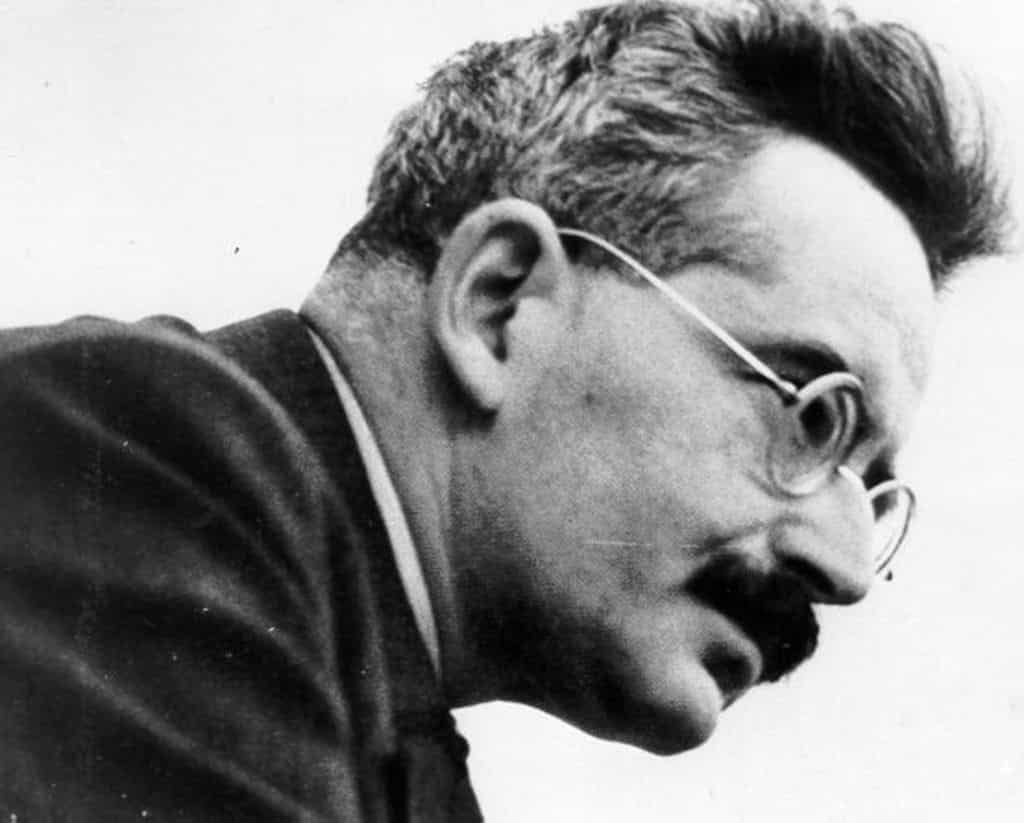
“Aura is a quality integral to an artwork that cannot be communicated through mechanical reproduction techniques – such as photography”
“Even the most perfect reproduction of a work of art is lacking in one element: Its presence in time and space, its unique existence at the place where it happens to be.” He referred this unique cultural context i.e. “its presence in time and space” as its “aura“
This important concept, forgotten for a while in cultural discourse, today presents itself with a new, extraordinary relevance, indeed, it acquires an even more enlightening and profound value, if possible.
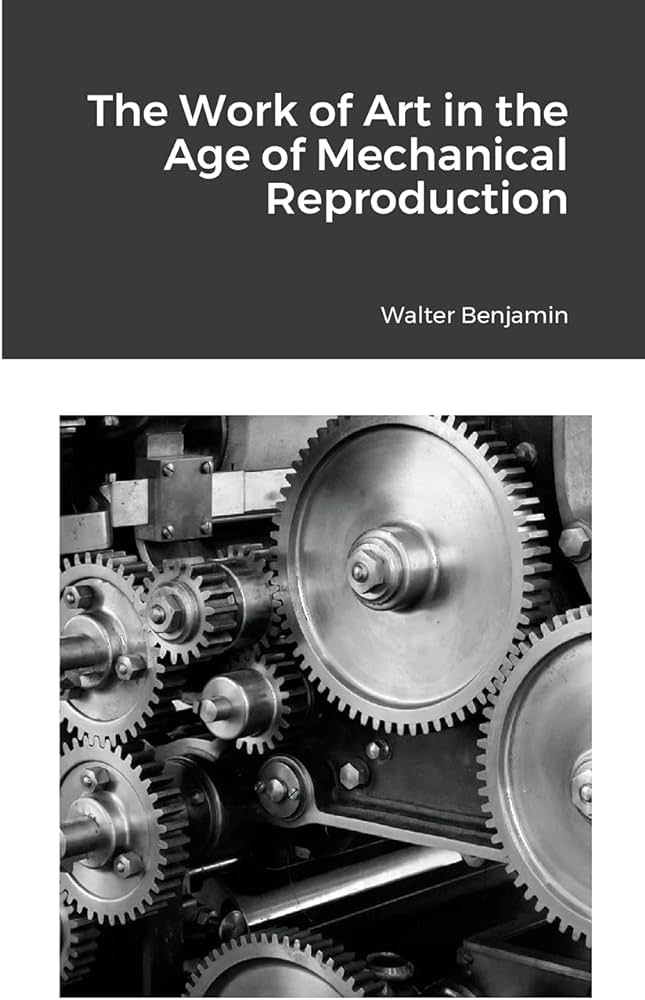
Naturally the original concept was developed in the 1930s, and therefore referred to the tools available and conceivable at the time, such as photography and printing, while today we are faced with a real explosion, a pulverization of reproduction systems, to which, as we will see, the concept of an original “generation” from scratch is also being added.
Yet never before can this concept be applied, with the necessary adjustments, to fully understand what is happening under our eyes.
In fact, it is no longer a question of a mechanical “reproduction” of an artwork and its multiplied diffusion over time or space. As we mentioned above, today we are witnessing a mechanization (“artificialization”) of the creative process itself, as the very definition of GENERATIVE AI says.
The definition, therefore, could be reformulated in this way:
“Aura is a quality integral to an artwork that cannot be generated through artificial processing techniques – such as AI.
“Even the most effective artificial generation of a work of art is lacking in one element: the presence of a human being as a catalyst and interpreter of experiences, its unique existence at the place where it happens to be generated.”
In other words, I believe that no algorithm, however sophisticated, and no system for collecting information and reprocessing it, will ever be able to recreate this “aura”, for a completely elementary reason: it is only we as humans who can generate perceive , interpret, transmit that aura. No artificial system will ever be able to do this, because it is simply “artificial” and not human.
Humans are the programmers, the technicians, the owners of that system, of course. The generation and management of this system is certainly human. But the system is designed to independently (i.e., artificially) GENERATE something, and this “something”, by definition, is no longer generated by a human.
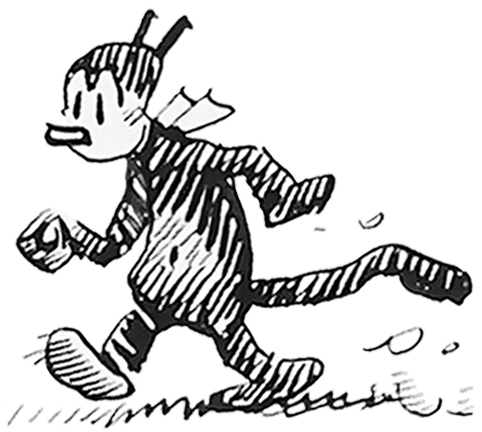
All this may seem like a rather abstract, ideological game of verbal definitions, but instead it is a fundamental cognitive distinction: we can hold a pencil (an elementary “mechanical” tool, but complete for the purpose for which it was manufactured) to draw the representation of a cat on a sheet of paper, and this will be the representation of that “cat” according to our unique and personal vision of it.
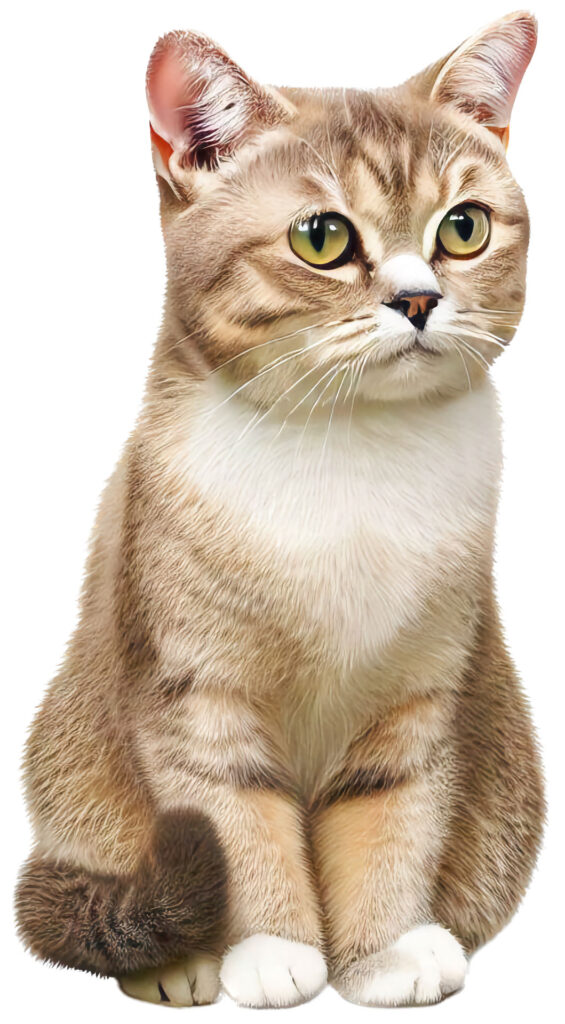
If, however, we had an ideal “AI pencil”, we could simply formulate the request “Please draw a cat”, and we would obtain an image of a cat generated autonomously by that tool. But the cat drawn this way will not represent our vision, but will be the product of an automatic processing of thousands of information retrieved from a huge database, completely independent of our cognition, regarding a | cat | concept.
We could also ask the system for something much more complex, the fruit of our particular imagination, or even from a dream, such as: “Please draw a pink cat in black boots and a pirate red hat riding a golden bicycle at night in Hobbitland”; and we would certainly obtain a rich, original and entertaining image (heck, I don’t want to even try…), which to produce manually would have required us hours of work and a lot of technical ability. But which will be always inevitably foreign to our original and unique vision, and the result of the elaboration of that of an unknown number of subjects different from us, and singularly unaware even of our very existence, and completely unaware of being part of this process.
Anyone who then saw the final product of this process could easily be led to believe that the final image presented has a true human origin, and is therefore the vehicle of a unique and original vision capable of transmitting a particular “human” emotion, but this would just be a scam, a fake, a fairground magician’s illusion, which doesn’t move the actual substance: the object is an “artifice”, it’s artificial, and that’s all. What it will transmit will not be the vision of an “author”, of a creator, but that synthesized by an algorithm of one, none or one hundred thousand anonymous “authors”, dispersed throughout the space of the web. It will therefore convey an emotion, if any, which is also completely artificial, synthetic, fake, standardized. In a word, lifeless.
And it will be lifeless because we, who look at the image, KNOW that this is how it is. Unless it is passed off to us through deception. And even in this case, we would have the sensation, even unconsciously, of its essential falsity.
And, to return for a moment to our particular profession, it is easy to understand how we would obtain a similar result if our instruction to the “machine” became: “Please ANIMATE a [pink] cat in [black] boots and a pirate [red] hat riding a [golden] bicycle [at night] in Hobbitland”.
At this point it will be necessary to recap what has been said so far, to understand how important this is for reviewing our present and our future prospects in the midst of this “perfect storm”, how we can think of maintaining control of the route, how can we manage not to get lost and shipwrecked in what will be, this is certain, a big epochal change.
Let’s Rephrase.
“Animation: Profession or Vocation?”
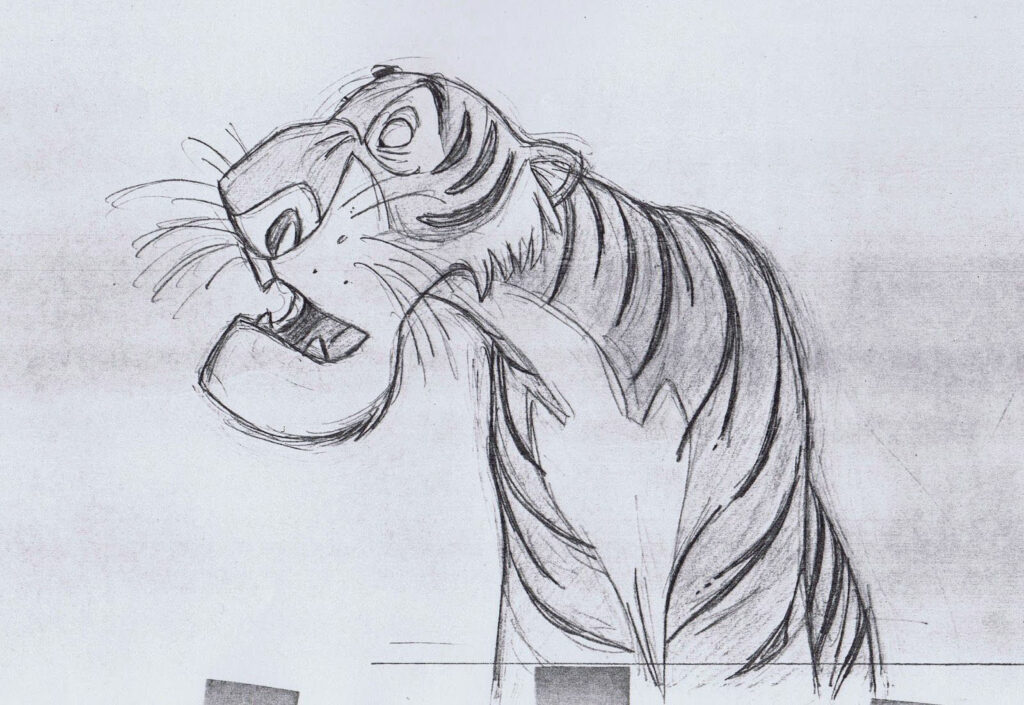
Walt Disney’s Jungle Book was, in my memory, the first animated film I saw in a cinema. I was still a child, but I still remember perfectly the enormous impression it made on me, which never left me again, probably influencing – more or less unconsciously – the choice I made much later to dedicate myself to this profession.
And also much later, when I had already decided that this would be my stable occupation in life, I “discovered” the artist who was the author behind many of the most memorable scenes of this film, all well etched forever in my mind.
I remember it because this, more than others from the great “dream factory” of Burbank, is a film that, much more than on the narration, on the beauty of the images, on the plot, on the colors, on the music, is based on animation. It’s pure animation.
Emotions, fun, dreams, adventure, drama, are all conveyed by animation. A strictly hand-drawn animation, by the way, a substantial part of which created by an authentic genius of this art, whose name was Milt Kahl.
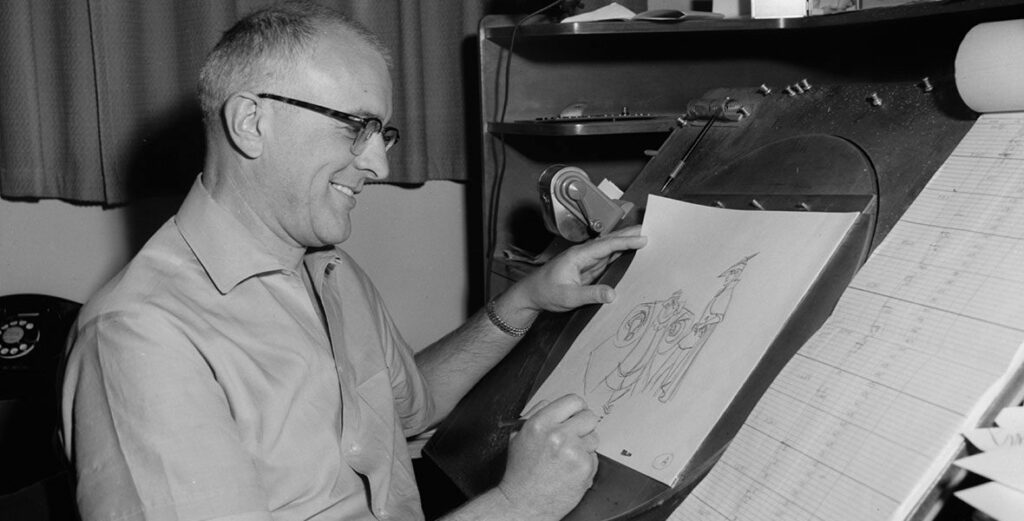
I had unconsciously perceived this special and unique dimension already as a simple spectator, a child who at the time, when asked what he wanted to be when he grew up, answered without hesitation “the truck driver”. (Yes, I really loved big trucks!)
Then when, now an adult and already active in the profession, I finally had the opportunity to give a name, an identity, a human body to the author of those wonderful drawings, I underwent the same process of identification and emotional involvement that I described in a previous article about Dürer and Mozart/Kremer: I was aware that a human being, by his hand, maneuvering a pencil very similar to mine, had traced those drawings which, with a “magical” and ineffable process, had changed those signs in a “living” character, with his own personality, his own thoughts, his own emotions.
And this without the drawing having anything to do with a “real” tiger, in the flesh, today we would call it “photorealistic”. (BTW, how much the results of certain AI processing pretends some kind of “photorealism”!)
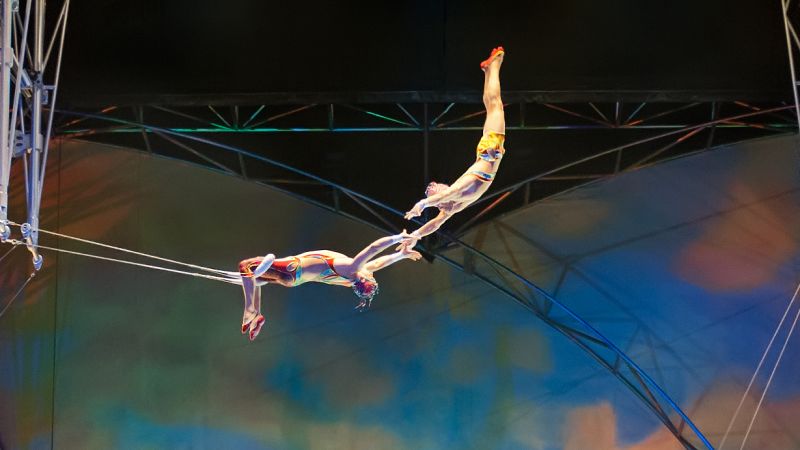
The “Maestro Virtuoso”
But our instinctive admiration for the artist as such is not only a spiritual, emotional question, but also an eminently technical fact.
Actually, we know from the Ancients how the terms “Ars” and “Techne” are intimately interconnected, so much so that one cannot be defined in the absence of the other.
The circus show is a perfect representation of this assumption. Here the “work of art” is as such absent, or rather, the artistic act (because this is always what it is about) has no communicative, informative, cultural ambition in the broad sense, but relies on pure talent in execution of a certain “exercise”, or performance, to complete which we know that the artist required years of effort, daily practice, rigorous discipline and total dedication, as well as a strong innate predisposition (or talent). We admire the elegance, the apparent lightness and ease, and the great daring, for example, of a trapeze vault at a height of ten or twenty metres. Movement communicates beauty to us in its own way, and certainly transmits emotions to us, but what we “admire” in this case is not the work itself, but the fact that it is presented to us (performed before our eyes) by a human being in every way similar to us, if it weren’t for that very particular and inimitable talent.
It is the same mechanism that leads us to admire some great musical performers, such as Gidon Kremer of whom we spoke above, beyond the beauty and aesthetic and cultural depth of the piece played: an aspect of the artistic performance which, in the musical language we use to call “virtuosity”.
It is a component of our perception of art that is present, to a greater or lesser extent, in all the arts, and is completely indivisible from them.
Virtuosity is the ability that, for example, Dürer exhibits in distributing colors on the canvas with unparalleled mastery, capturing and giving an expressive way to every shade of light and shadow.
And “virtuosity” is one of the components of the admiration that, particularly as animators, we feel for the inimitable sign of Milt Khal, for his ability to portray with a few strokes, apparently without effort, the soul, the thought, the illusion of life of a completely imaginary character.

The “virtuosity” component is a totally and rigorously human result, which any attempt at “artificialization” is by definition destined to fail.
Of a “machine” we can admire the cleverness of the project, the perfection of the internal mechanism, the prodigious processing power. And the product that this machine, as it is “generative”, can arouse our wonder and amazement, as does an eighteenth-century automaton capable of “playing” even perfectly, once the clockwork mechanism that moves it is wound, a Mozartian piece.
But we can never give that product the value, or even the name, of “art”.
Body and Soul
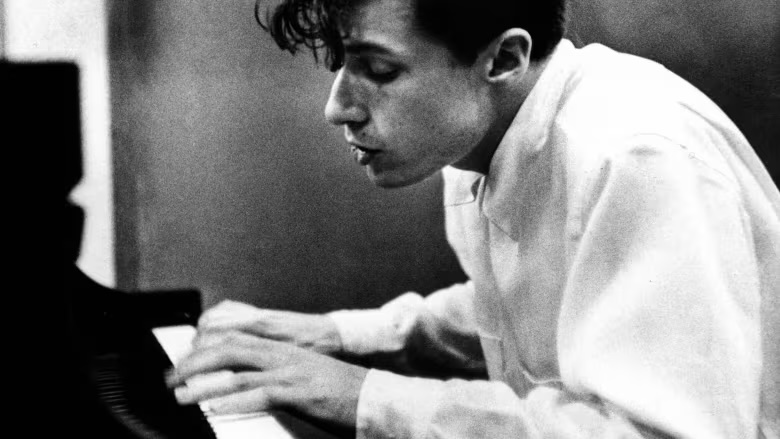
I want to add another element to this subject – a topic which I will discuss in more detail later because it is inextricably linked to the daily practice of every art form and an important part of the personal experience of every “professional” artist, also in our sector – an even more “impalpable” but essential aspect of the eminently human contribution to the creation (“generation”) of a work of genius, beyond virtuosity and execution: talent.
It is an inflated term, often used inappropriately, especially in the commercial context, when in fact it is something very specific and qualifying, in this area.
Below I report the definition given by some dictionaries:
Cambridge Dictionary:
Talent: “A natural skill or ability to be good at something, especially without being taught”
Collins:
Talent: “The natural ability to do something well.”
Britannica:
Talent: “A special ability that allows someone to do something well”
Wikipedia:
“A talent (or aptitude) is the natural ability to do something better than most people. Talent is often confused with skill. We can develop and improve skill but not talent.”
It is curious that the most focused definition in my opinion is given by Wikipedia, while the “classic” dictionaries limit themselves to a more generic and conventional definition.
In any case, here we are at a much deeper level than the “virtuosity” I spoke about above, which as a concept could be compared to the term “skill”. This is an aspect that still contains something “mechanical”, that is, the ability to reach or approach perfection in the execution of a work, and only the knowledge that it is a human being who generates this perfection gives it, in our eyes, a value. For a “machine”, however, it is a performance that we take for granted, inherent in the very definition of “artificial generation”, and which does not arouse any amazement or admiration for the generative process: if I, using a generative AI application, obtain a certain result, you too, using the same application, will be able to obtain the same result, or, in any case, a result of totally similar “value”.
Talent, on the other hand, is an element closely linked to the human factor: only a human being can develop and express more or less “talent” for the creation of something, in particular a work of art. You, thanks to your talent, can animate a certain character in a scene, and obtain a result of a certain “value”. I, with less talent, can animate the same character in the same scene, but my result will certainly be different, and above all of a different “value” than yours.
No “machine” will ever be able to express “talent” as such, precisely because of the very definition of “artificial“.
I still ask for help with the definition of a couple of dictionaries:
Oxford:
Artificial: “Produced to copy something natural”
Britannica:
Artificial: “Not natural or real: made, produced, or done to seem like something natural”
The process therefore is and remains a simulation, i.e. the simulation of the presence of a human mind (his “intelligence”). The product of this process, however perfect or surprising it may be, is and remains “alien”, detached from the human agent who initiated this process. For this reason, in the case of a work of art, it can communicate its content to us, but it will never be able to tell us anything about the soul, the talent of the author, because, ultimately, the author is not human, and therefore it can have neither talent nor, much less, whatever it is, “soul”.
Artificial Luddism
At this point we can begin to understand the devastating damage that this voracious and overflowing technology could cause in our social fabric in general, and in our delicate and restricted professional sector in particular.
I will not dwell on the problems of generating ideas, developing content, and disseminating news, because that would be too far outside the scope of these articles. Nor, remaining in the field of the image, on how the reproduction and interpretation of reality can be replaced by its “plausible falsification”, with the very serious danger of relativizing the factual objectivity, a process that has already affected the social fabric under the form of various conspiracy and denialist theories, which can only have a further, powerful leap in quantity and quality of the damage.
In reality, I would like to add, lest I be seen as a 21st century “Luddite”, this technology in itself is not the “devil”, not unlike many other “extreme” technologies of the past, for example nuclear technology. There are areas of research and application that are already benefiting from it, bringing results of great relevance for science, knowledge, culture, and the general progress of humanity, in the most disparate sectors.
To give a recent example, totally inserted in a historical, humanistic and cultural discourse:
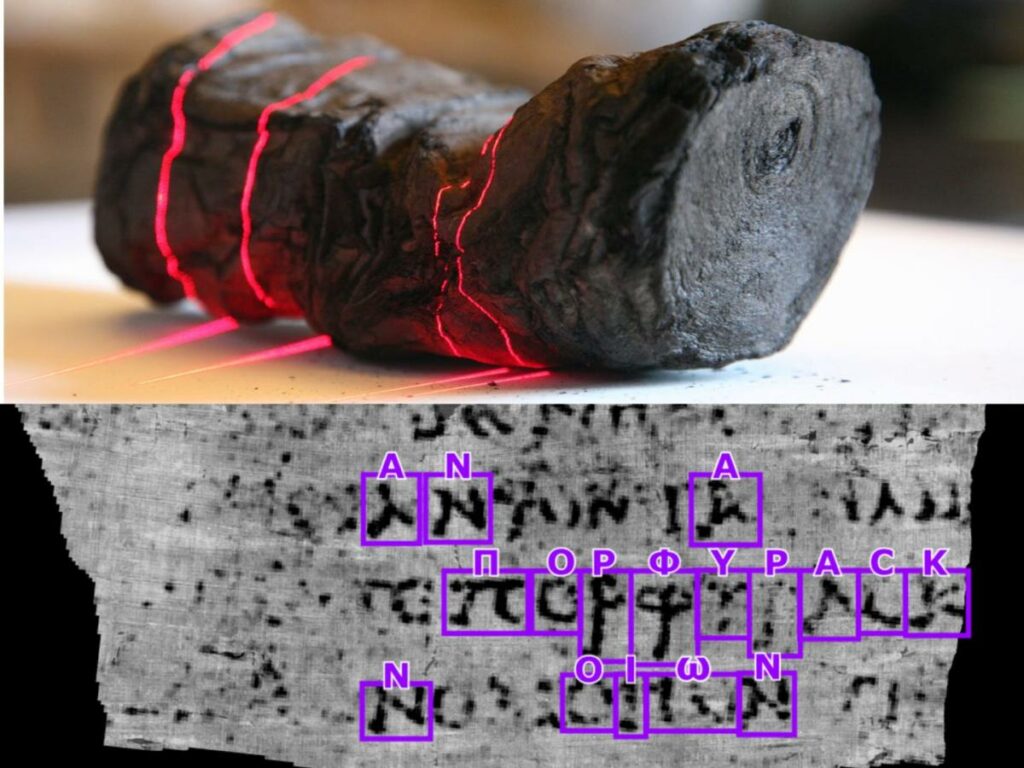
Hundreds of papyrus scrolls in the ancient city of Hercolaneum were preserved after the eruption of Mount Vesuvius in C.E. 79, constituting the only intact Greco-Roman library known to survive from antiquity. For thousands of years no one could open them without doing irreparable damage. Now researchers are using advanced imaging technologies and special AI machine learning to reveal writings that have remained undetectable until today (Thomas Weber – Scientific American – April 2024).
This does not mean, however, that there are not serious risks, just as in the nuclear sector, in addition to scientific, medical and energy uses, there are military ones, all of which are frightening, or even crazy and criminal.
To limit myself to the artistic sphere, the damage could involve not so much the generations now operational, already in possession of more or less valid experience gained in the field, who could simply find a “convenient” and advantageous way of carrying out their activity, but rather the younger generations, and future ones, to the extent that they lose the stimulus and motivation to equip themselves with the efficient and effective technical means to express their ideas, to reshape the world, to create the image of themselves.
As an “old” animator, for example, I have always been impressed by how many young artists, often very talented, simply don’t know the correct grip on a pencil.
This phenomenon almost certainly derives from the fact that starting from primary schools we are progressively losing the use, and therefore the related ability, of handling traditional writing instruments, i.e. pen and paper, in favor of various devices with keyboard or interactive screen. In essence, the basic technique of writing, i.e. how to hold a pencil, a ballpoint pen or, even worse, a fountain pen, is no longer taught or learned. And I assure you that with certain postures it is doubly more difficult and tiring to achieve excellent results in traditional animation, even drawing with a graphic pen in a digital system (indeed, perhaps even worse, since it requires even more rigorous control of the stylus).
This is a minimal example, however I wonder how much the new generations could lose in terms of creative ability given the exhilarating ease of producing – or artificially generating – a synthetic image in a few minutes, impressive, but also fatally similar to that of anyone other? How much will they lose in terms of vision, interpretation, reflection on reality (and on the imagination, which of the reality is the distorting and informing mirror)?
I leave these reasonings open, and return to what has been said so far on the essentially and exclusively human character of artistic creation.
Aura in the Time of Cholera
All this is nothing other than what we defined above, with Benjamin, as the “aura” of the artwork, of the same nature as that which moves us and excites us in front of a beautiful painting or listening to a great piece of music.
And we have seen how this sort of emotional “communication channel” between the artist and his audience is only possible with the presence, at one end and the other of the thread (the work of art) of (at least) two human beings, no matter if coexisting in time, place, culture, experience.
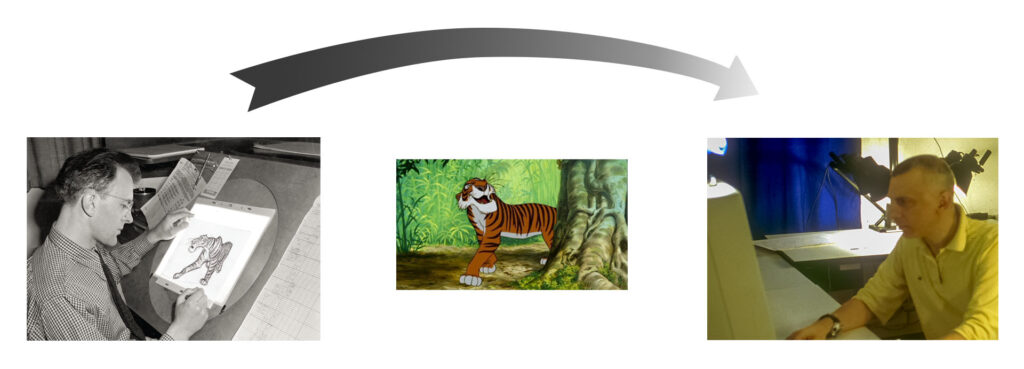
It is precisely the work of art that acts as a bridge, as a conductor, the “fiber-optic cable” that conveys this flow of information between the “creator” and its recipient(s), which ultimately constitutes, in the consciousness of the “receiving” individual, that thing which we call “emotion”, which can be aesthetic, cognitive, moral, even ethical. Or all of these things together.
At the beginning we posed the problem of how we could, or would like, to define ourselves as animators: whether we are “artists” or rather professionals, or even just workers – executors like any other in a factory (and show business IS nothing else than a big “factory”).
Obviously this is a perception that must be completely individual, we could simply feel like executors who provide a certain technical ability to realize an idea, a narrative, a vision belonging to someone different from us. And being perfectly comfortable like this. Being just “tools”, certainly skilled and qualified, but alien to the original “GENERATION” of the idea, the project, the final product.
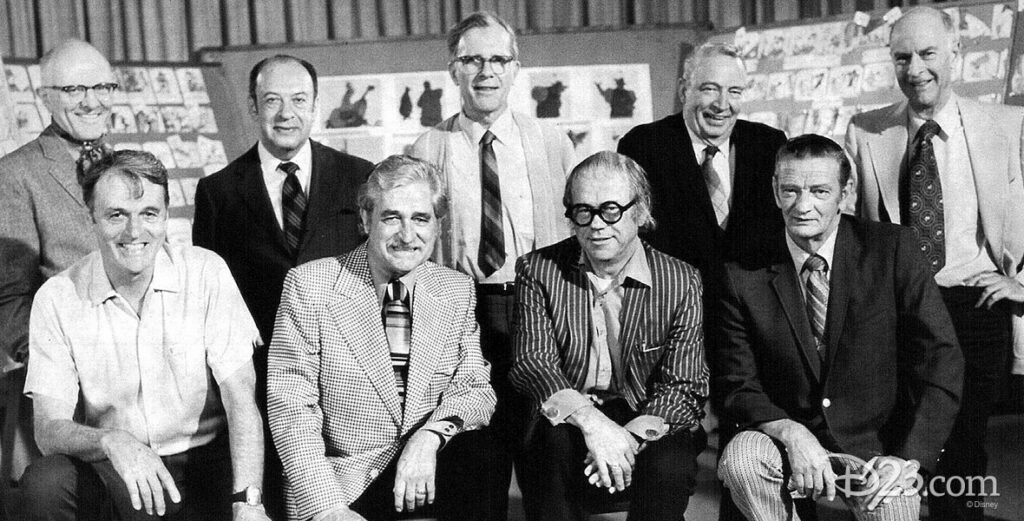
However, for many of us things are different: Milt Kahl, even though he was employed all his life in such a structured and large “factory” as Disney was in the golden years, was certainly not a simple performer, but he was an authentic artist (for many of us truly a genius in his field) who left an unmistakable and indelible mark on the history of this industry and art form. The other eight of the famous Disney’s “Nine Old Men” group were certainly not far from his genius, and so were many great animators, inside and outside Disney, at all times.
This is the reason why I have taken the risk of suggesting you to ask yourselves, your conscience, what could have really pushed you (and us) to undertake this demanding profession, and not any other – perhaps a commoner one, paid more, more coveted, more recognized.
There may be more or less favorable external circumstances, for example a chance meeting, acquaintances in the business, being in the right place at the right time, even just a moment of madness. But beyond this, we all know that this is an eminently VOCATIONAL profession. Like the musician, like the doctor, like the priest, like the athlete.
In other words, there is an indefinable force that, sometimes blatant and unmistakable, other times completely secret and unconscious, pushes us, even forcing us to effort and sacrifice, in that direction, precisely in that direction, and not any other than that.
This is nothing else than that human component that makes us an irreplaceable uniquenesses, what makes us what we are, different from any other artist around us, and which makes our vision of the world equally unique and different, completely original. And therefore very difficult, if not even impossible, to be reproduced by any “artificial” system.
It is the accumulation, the stratigraphic sediments of all our individual history, of our experience, of our knowledge, of our studies, skills, talent, which contributes in a unique and irreproducible way to creating our specific sign, our unmistakable imprint on reality and imagination.
And this is exactly what no Artificial Intelligence will ever, by definition, be able to re-produce, let alone produce. Or “generate”.
Here is therefore the key with which we can face the challenges that loom on the horizon, certainly not with serenity, but at least with a little clarity and realism, and hopefully with a little less anguish. That is, finding within ourselves the true uniqueness and specificity of our work, what makes us irreplaceable in the face of increasingly automated and standardized production; and to do so, as we will see later, we will have to go to the primary roots of what we have defined, rightly, as a “vocation”.
But I wouldn’t want to spoil too much, let’s return for a moment right to heart of the great challenge that this technological and cultural process is imposing, in general, to almost every productive and creative sector of Western societies…
Entropy or Resistance:
“Apocalypse, Postponed?”
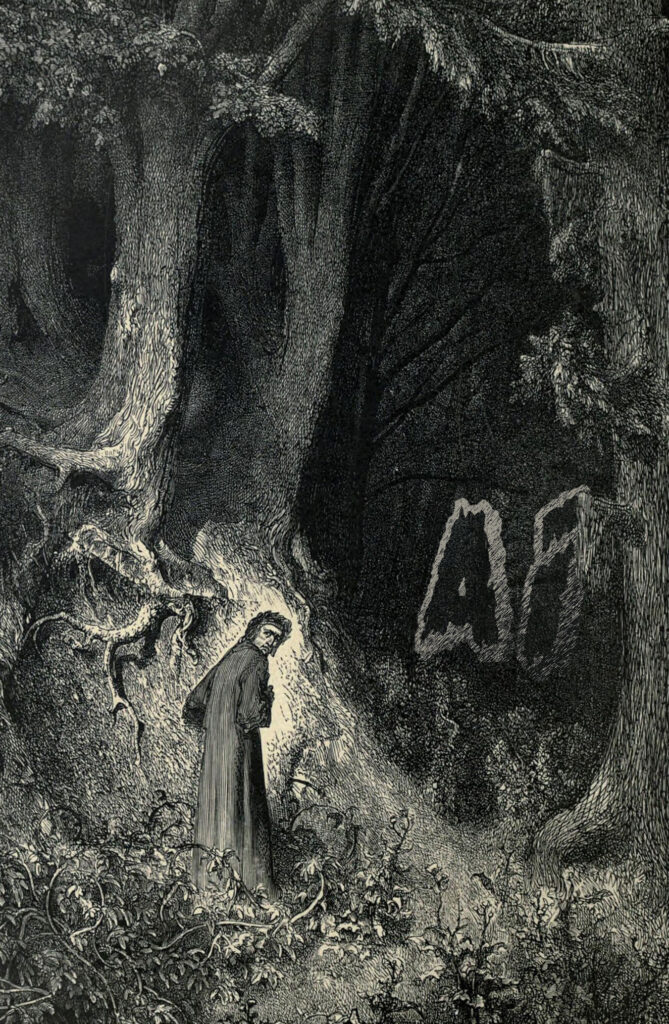
This sounds, in English:
Midway this way of life we’re bound upon,
I woke to find myself in a gloomy wood,
Where the right road was wholly lost and gone.
As we move further into this metaphorical “wood”, an impervious territory still largely to be explored opens up before us, with all its unknowns, its promises, and its obscure threats, in which we feel increasingly lost, at the mercy of a phenomenon that seems to transcend our own possibilities of understanding and control. However, we are still at the beginning of the story, and how this new challenge can actually take place will largely depend on us, and on how we want, and know how, to approach it. And, no, it doesn’t necessarily mean it will be hell.
Of course, at the time of writing, as we are still at the very beginning of this huge techno-cultural process, we cannot in all honesty know where it will take us, and in what time frame.
However, I already feel like imagining possible scenarios, based on what we are already able to know about it.
– We know that the sector is experiencing very rapid and tumultuous growth, after a few years of hidden quiet maturation – understood or even just intuited by very few of us.
– We know that this sudden quantitative “explosion” is already placing heavy sustainability burdens: computing facilities are voraciously hungry for energy, space, security, basic raw materials (processors and memory chips above all).
– We also know that the energy global demand of these systems is already exceptionally high, with very significant environmental and therefore global warming burdens – especially at this moment, in which we find ourselves very likely in front of the last “time window” available to hope no longer certainly to stop, but at least slow down a bit the course of the global events unleashed.
– But, what we get from it, intuitively, is that this process, tumultuous and apparently unstoppable, already contains within itself the seed, not of its failure, but at least of its substantial containment.
I could say, with a somewhat trivial joke: “It’s Entropy, baby…”
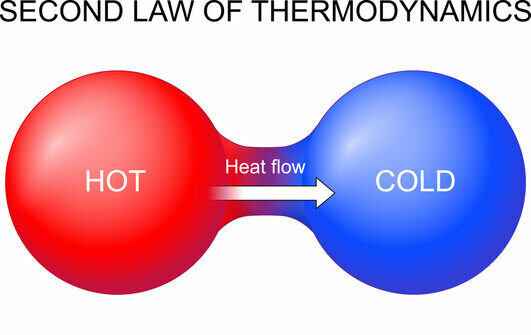
In fact, even Artificial Intelligence, however “intelligent” and omniscient it may be, cannot do much to avoid submitting to the iron and omnipresent Second Law of Thermodynamics, which on the intellectual, social and cultural environment can have much more rapid and unpredictable effects than those of the physics, because in this case it is linked to the most unstable and unpredictable machine in the universe: the human mind.
In other words, it could be its own success that leads it more or less quickly to a “saturation”, to becoming something so obvious and pervasive that it no longer represents an excitant novelty, let alone a challenge, or a trend.
“La donna è mobile” (Woman is fickle), man more so, the social masses even more, and after a solemn hangover, with consequent migraine, nausea and vomiting, satiety and glut would set in and, likely, even a greater or lesser measure of intolerance.
After all, it has already happened in the past to witness other cultural or technological “hangovers”, and we know that usually humanity is capable of producing antibodies for its own protection.
Will it happen this time too?
To give a marginal example, rather inappropriate but in some ways significant in this context, I recall here the time in which the eBook made its debut, a phenomenon that had thrilled many, and alarmed others (fewer, but still in considerable numbers), fearing the disappearance of the book as an object, printed on paper, and consequently of printers, publishing houses, bookshops, and even writers.

Well, it is true that bookshops, especially local and small ones, have had to face a serious crisis, which has led to the downsizing and even the disappearance of many of them, as specialized commercial businesses. However, if we look closely, this crisis, which actually occurred at least in a relevant part, was not caused at all by the advent of the eBook, but by other market factors, like massive transfers of distribution and sales locations towards large distribution chains and online (read Amazon). The book as an object in itself, a technology almost 600 years old, is not “dead” at all, not for now, indeed if ever it has experienced a certain expansion, demonstrating that humankind is never passively and completely prone to what technology offers, or, worse, tries to impose on, in particular when this involves profound emotional experiences: it is clear that the printed volume, with its weight, its physicality, its concreteness, its convenience, its prodigious durability and stability over time represents, as a support and storage for the cultural memories of peoples, still something much more powerful than the “digital book”, affected by all its impalpability, its inherent evanescence, its exposure to the rapid obsolescence of the devices, and finally to its dependence on external and distant publishing systems, concentrated in the hands of a few global organizations, in no way controllable by the final reader, nor by the authors themselves, either individually or collectively.
In the end, we simply found the right balance, or rather the most advantageous one for us, between the instrumental convenience of the e-Book (the possibility of having dozens, hundreds of volumes with you in a few grams, always available – as long as the battery is healthy and charged – and the great durability of the “traditional” – printed – book, which still fills the shelves of our libraries, always ready to be read, to be browsed, annotated, and, why not, lovingly collected.
Returning to the heart of the matter as far as we are directly concerned, all this does not mean that this phase will pass without damage: on the contrary, the risk that the entire sector could be wiped out (a bit like Blockbuster was wiped out by Netflix – see article #06) is real and more and more likely.
OK, this particular technology could “wear out” until it finally disappears, like others in the past, but after leaving behind how much and what rubble?
And here’s the point: evidently “opposing” technological (and economic) progress is unrealistic and probably sterile. But in any case, to put it very bluntly and frankly, many of us will lose our jobs during the transition.
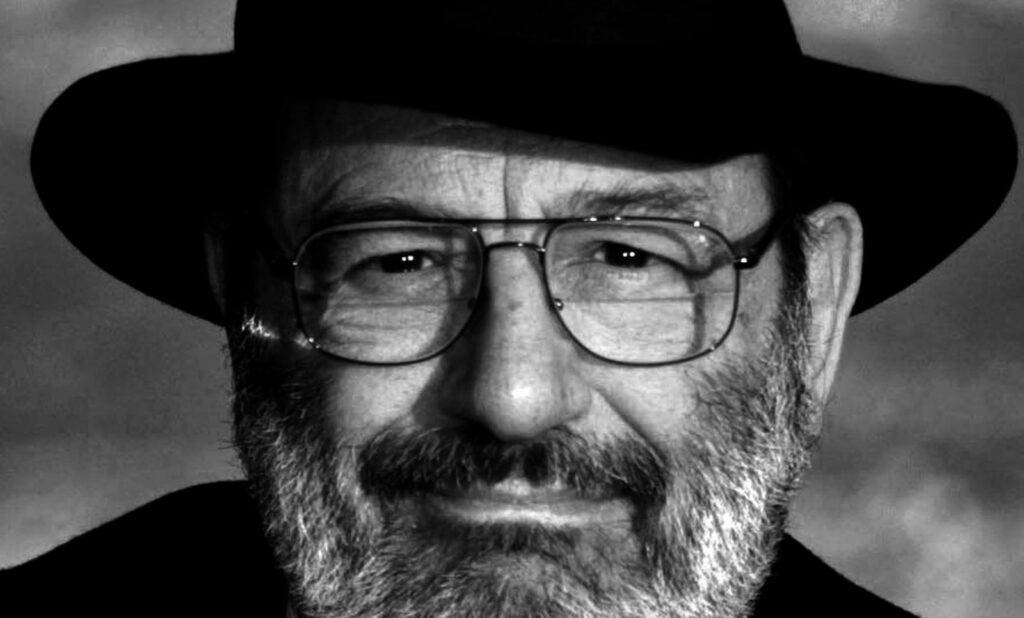
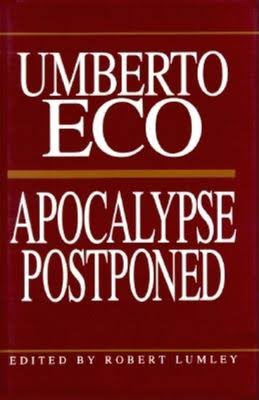
In one of his first essays, published for the first time in 1965, Umberto Eco, (Italian medievalist, philosopher, semiotician, novelist, cultural critic, and political and social commentator – and eventually my Professor in Bologna), expressed in a title that became proverbial (even beyond his own intentions) the two antithetical positions that an intellectual (writer, philosopher, artist) could take towards certain epochal changes that already then seemed (and in fact were) destined to overwhelm every institution, the costumes, culture and economy of the society of the time: the title in Italian sounds “Apocalittici e Integrati” (Apocalyptic and Integrated). That is: on the one hand those who predicted a total catastrophe, “apocalyptic” indeed, such as to renew History through its destruction; and on the other those (“Integrated”) who considered these mutations not only physiological in the system, but also completely positive and ultimately productive for the “bright destiny of Progress and Future”.
The essay highlighted how both these extreme positions were in reality not only inadequate to predict the possible developments of an ongoing historical path, but also unable to provide an intelligible description that could be used prospectively in the in the contemporary debate of ideas.
Today, returning to our specific field of interest, we find ourselves faced with the same dichotomy, a crossroads that appears to us to be very neat and mutually incompatible between those who place themselves in a position of clear denial, a refusal to accept the very legitimacy of the process, and those who see in it a totally brand-new opportunity for development and growth more or less “without costs”, and therefore resulting in a definitely positive final balance.
Even in this case, both positions appear to us not only – eliding each other – conceptually unproductive, but also devoid of perspective, both stopping at the current “moment”, incapable of developing a path aimed forward, towards the future, and not held back by ballast of the past, of what has “already happened”. The first due to the inability to grasp the stimulus that this challenge can trigger in the human mind, with consequent growth and development of individual and collective consciousness; the second because it is incapable of evaluating the costs in terms of knowledge, memory and culture, as well as mere jobs, human resources, which this systemic change could cause if not kept effectively under control.
What is certain, as I said above, is that this time the mutation could devastate the field down to its roots, and leave a large harvest of human resources on the ground. Therefore we certainly cannot remain passive and inactive in the face of these upheavals, otherwise we would seriously risk seeing ourselves overwhelmed by events and much likely cut off. Without prejudice to the fact that none of us – as individuals or as a collective – will be able to oppose and I won’t say stop, but not even divert the course of history, however, we still have the possibility, and indeed the duty, to implement a form of ACTIVE RESISTANCE against this drift, with all our abilities, skills, knowledge, experience and strengths.
I really mean “resistance”, because now what is at stake is not only our professionalism, our jobs, our wages, our role in production hierarchies, but also – and perhaps above all, at this stage – our very integrity, artistic, cultural – and, dare I say, even ethical.
And the only way we have to try to make this “resistance” effective and factual is to increase the value, the originality, the irreplaceability of the human factor present in the equation. That “x factor” that by definition generative AI systems will never be able to replace. That is, to define our true role in the production machine, and possibly make it irreplaceable.
Well, so far, in these first two introductory chapters, I have tried to carry out a bird’s eye examination, with as broad a perspective as possible, both from a historical, cultural and, finally, industrial point of view, on the territory of our profession as animators and artists of the image in motion.
Below, in the next chapters, I will try, even in a more practical and illustrative way, to delve specifically into the heart of the profession itself, its work tools, its sources, its cultural roots, its industrial and commercial relevance, and its real chances for further evolution and future development.
